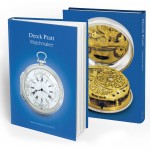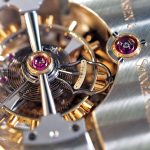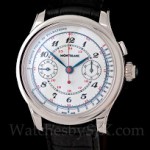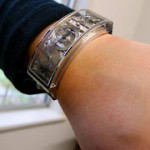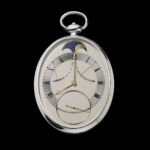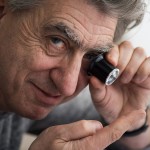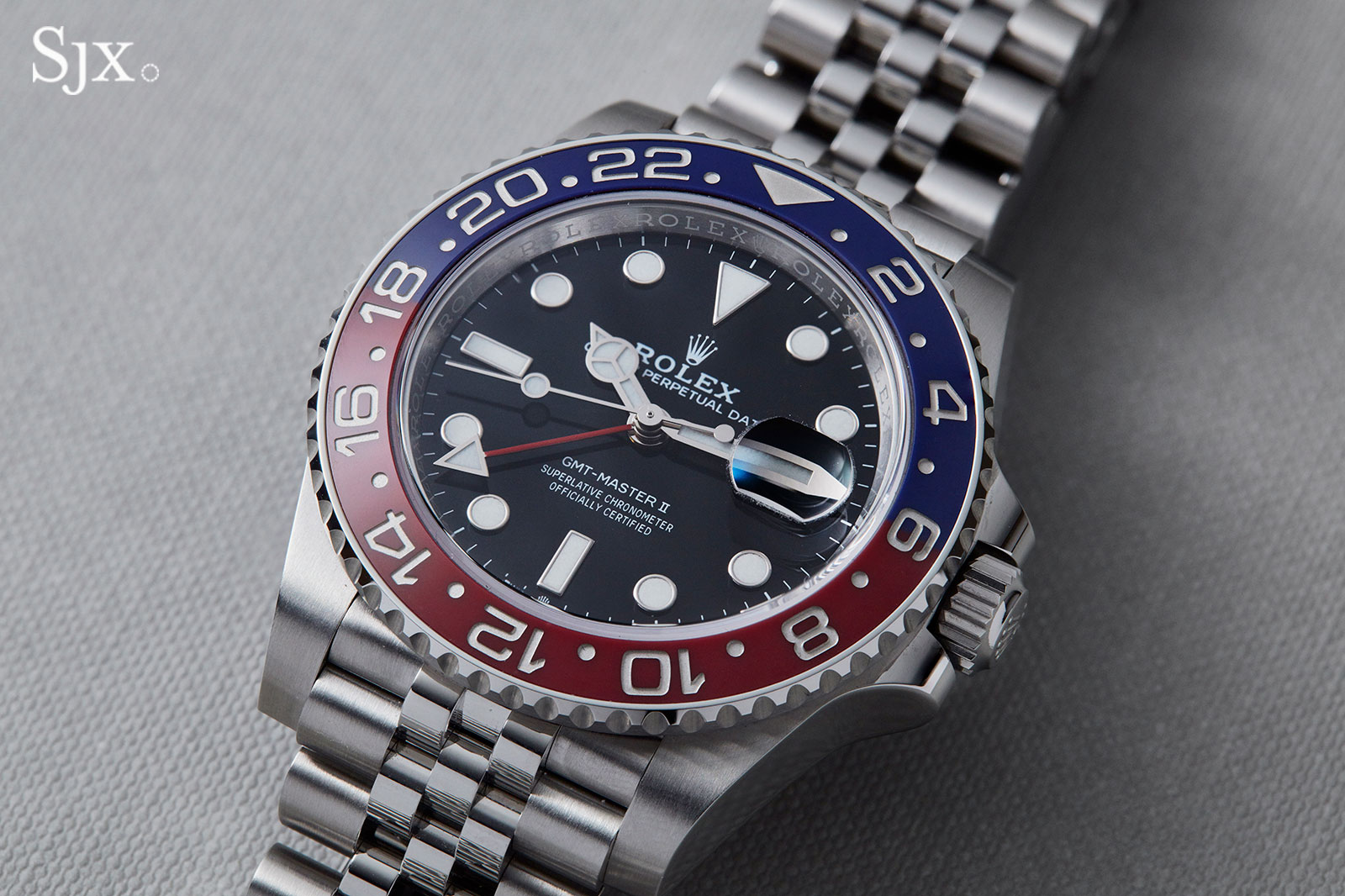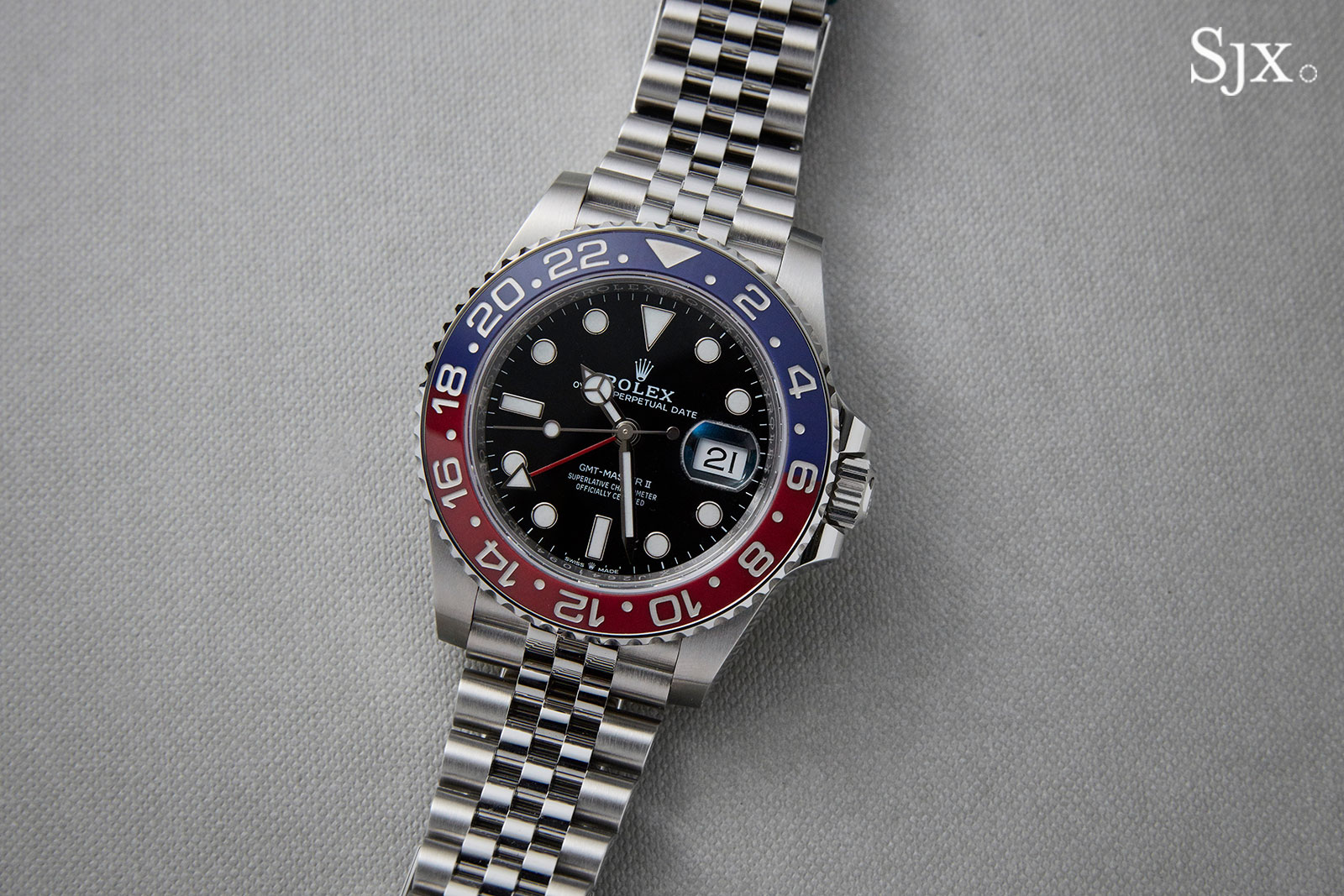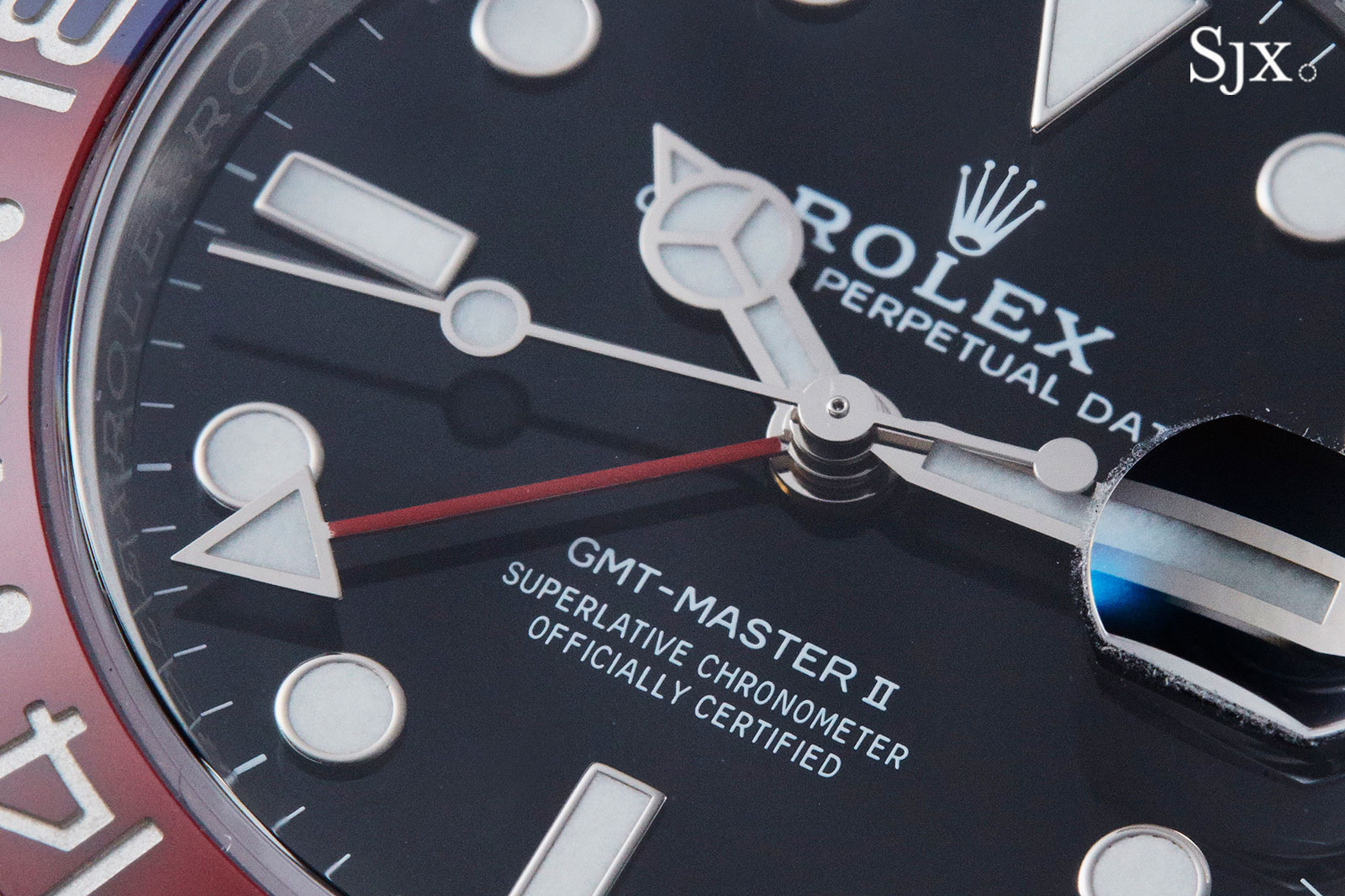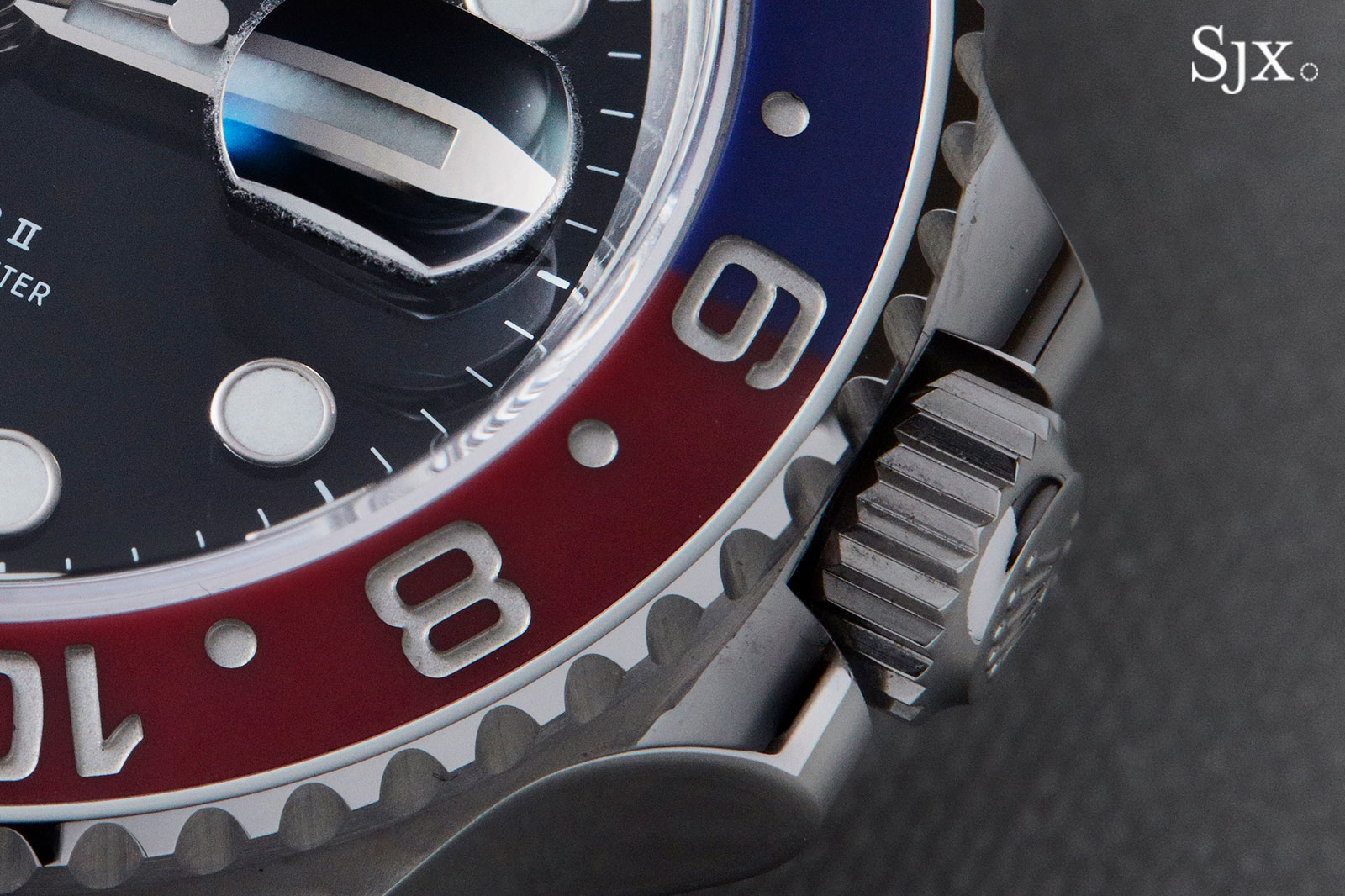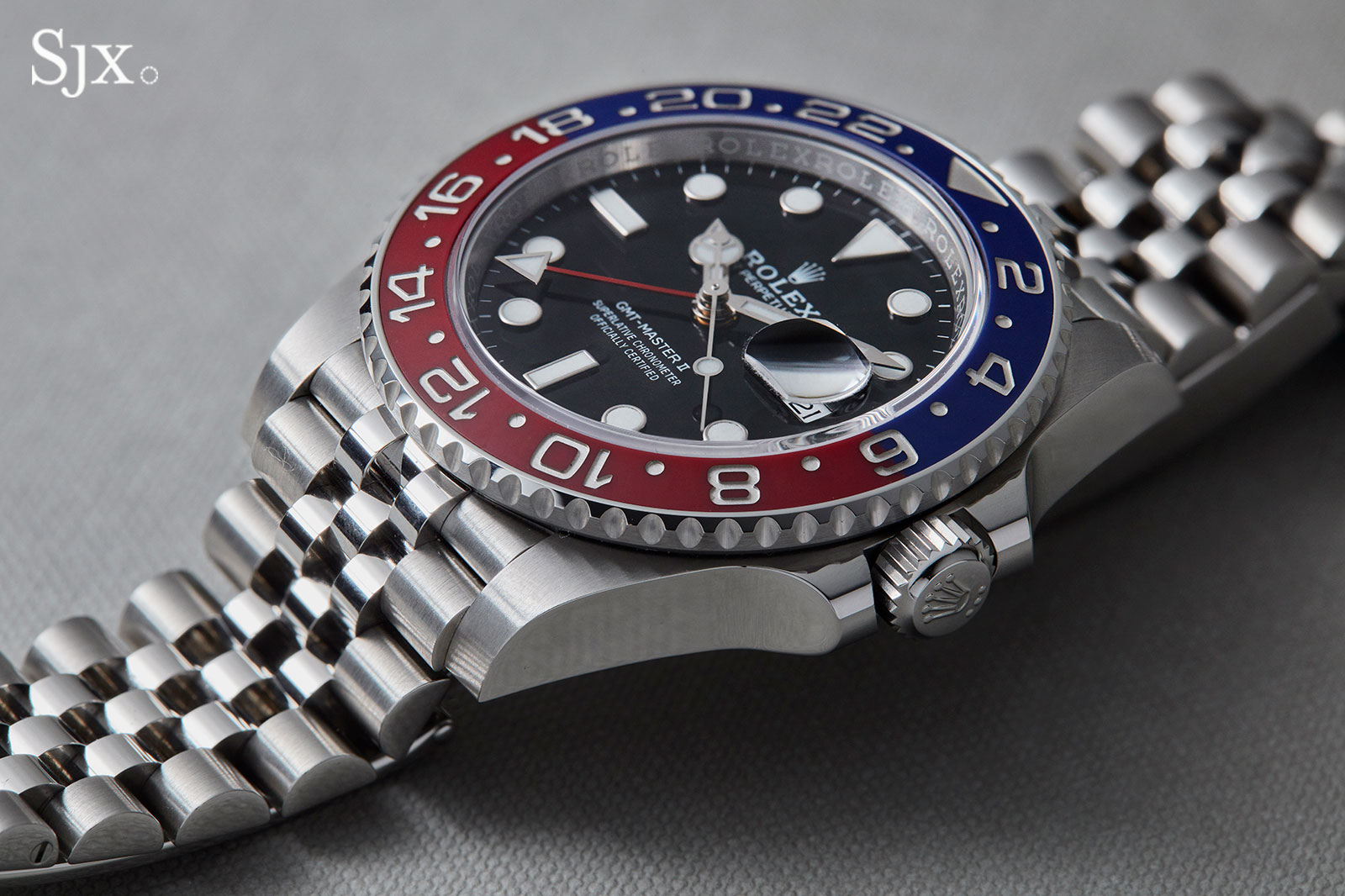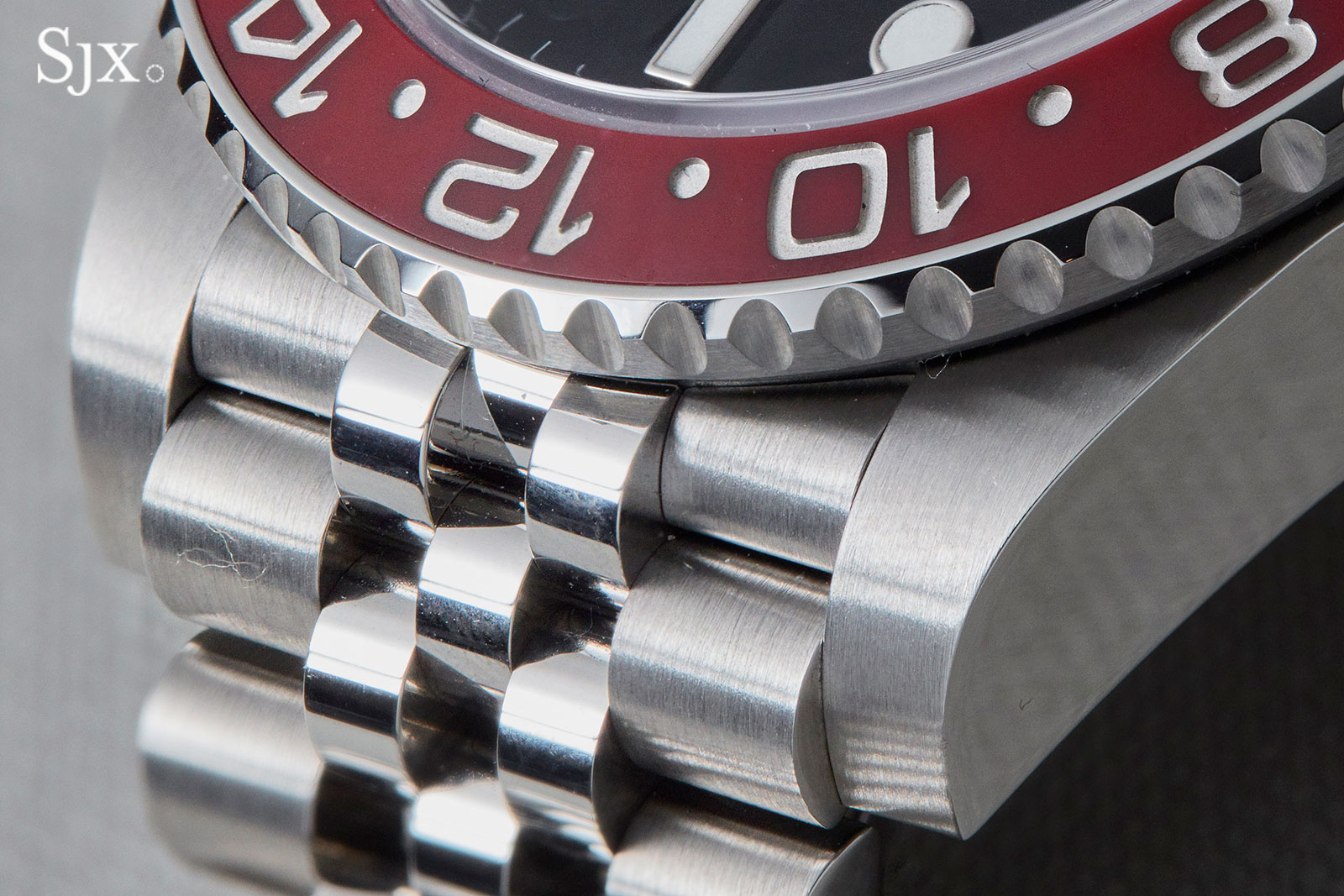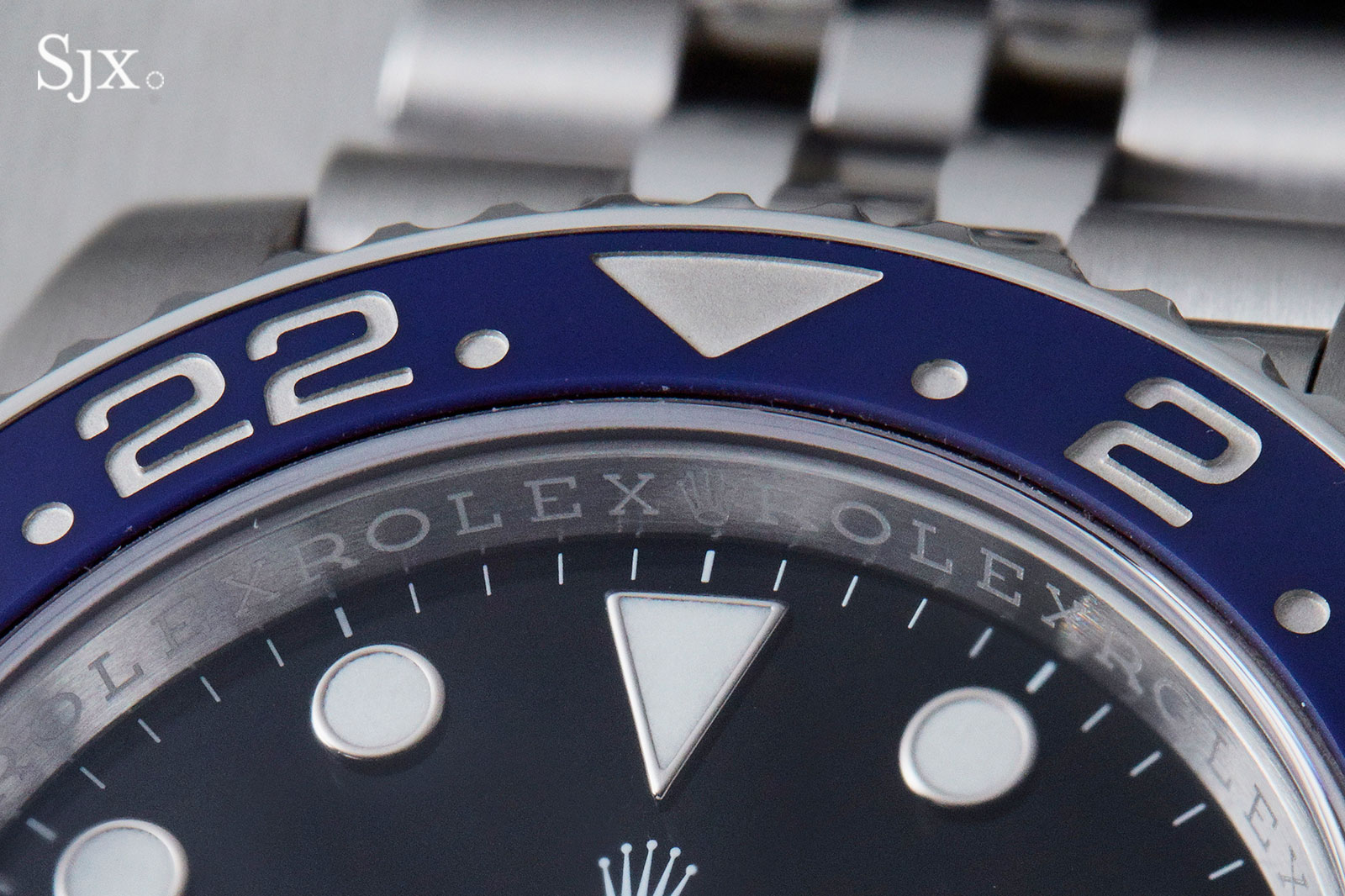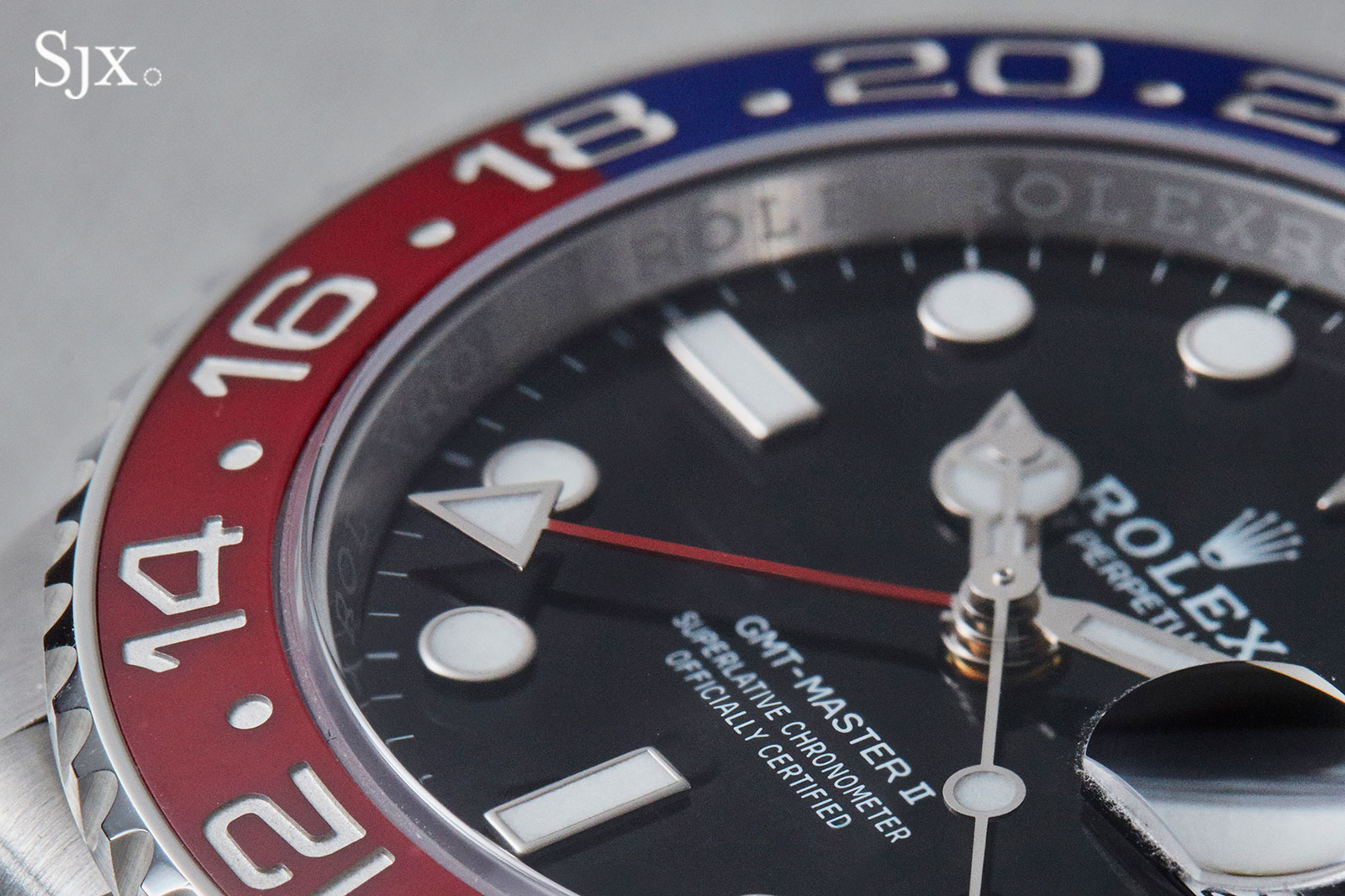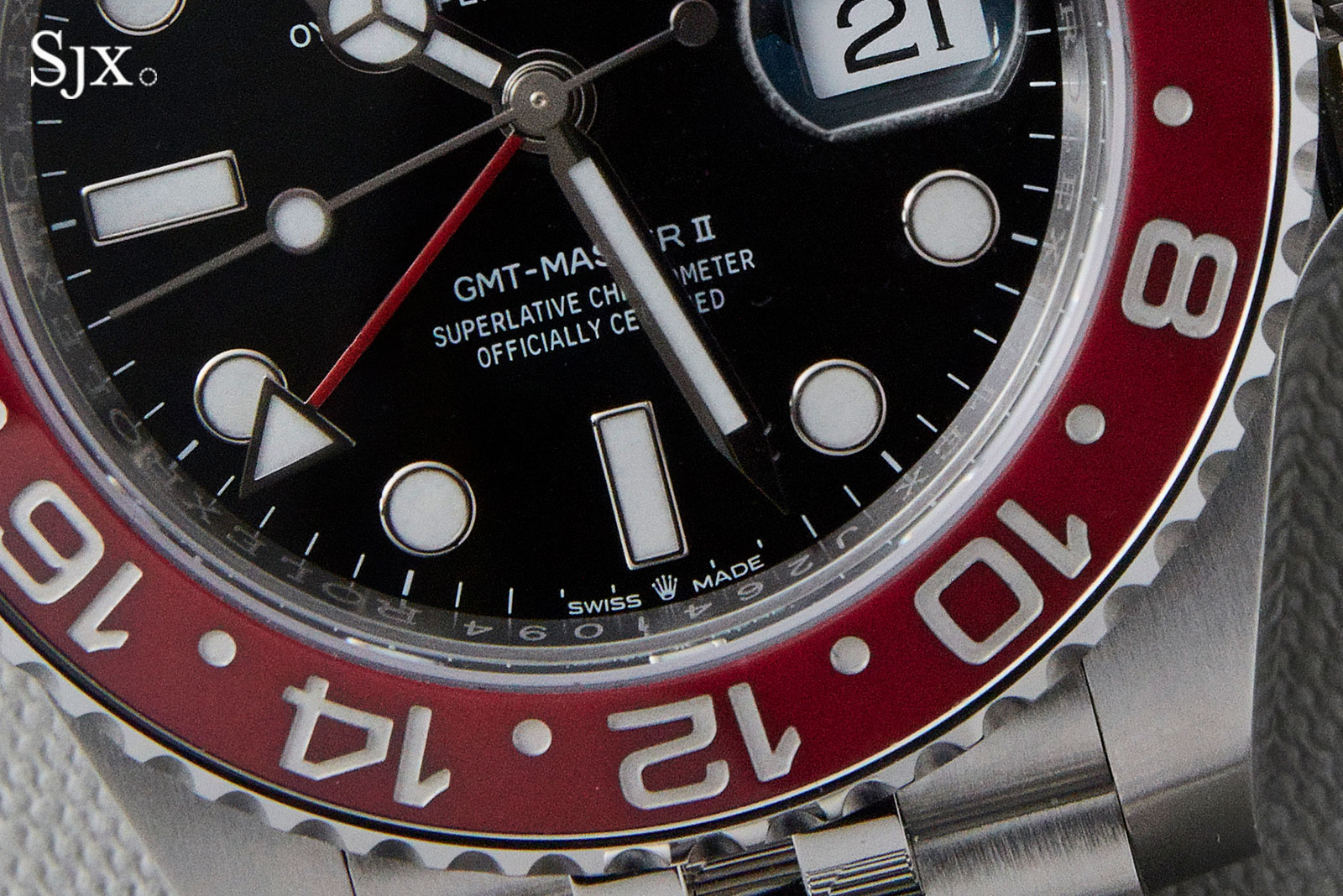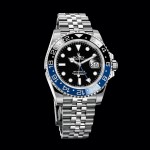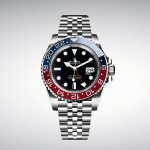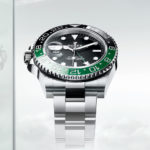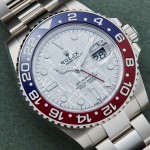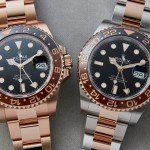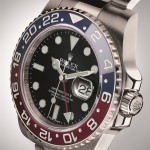The Greatest Unknown Watchmaker – Derek Pratt
An unsung hero of independent watchmaking.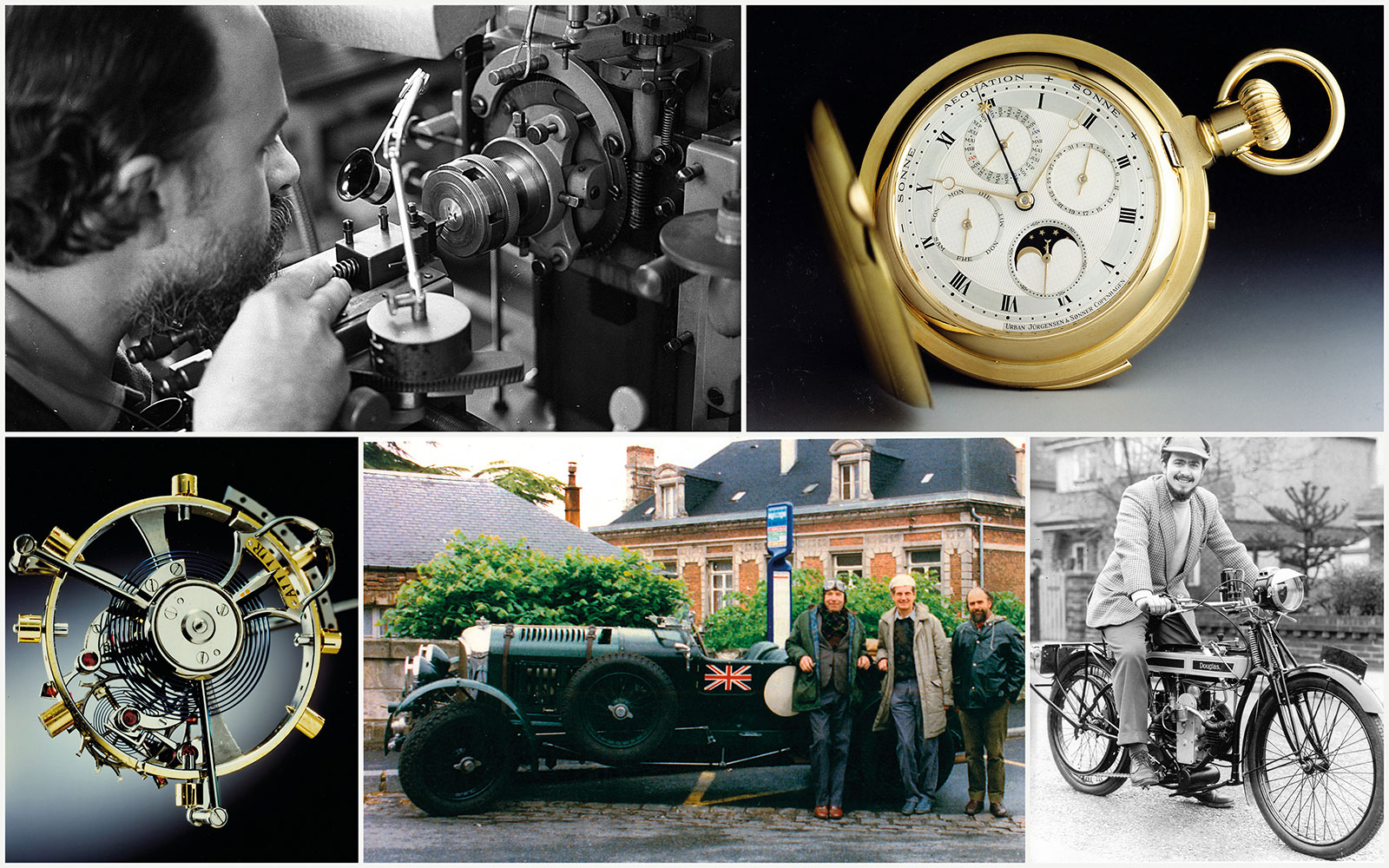
Many of those who knew Derek Pratt (1938-2009) compare his work favourably with that of his contemporary George Daniels, well known as the inventor of the Co-Axial Escapement and maker of the US$4.3m Space Travellers watch, but Derek’s contribution to horology is almost unknown.
Derek’s masterpiece was undoubtedly his Double-Wheel Remontoir Tourbillon pocket watch (though he also participated in two exciting wristwatch projects, which are now reaching fruition and are discussed further down).
The watch was entered in the Prix Abraham-Louis Breguet, a 1997 contest sponsored by the Breguet foundation to mark the 250th anniversary of A.-L. Breguet’s birth. Arguably, as Derek’s tourbillon watch perfected and enhanced two of Breguet’s inventions, the double wheel escapement and the tourbillon, it should have won (Carole Forestier took the prize instead with her concept that eventually became the Ulysse Nardin Freak).
Continuing the Breguet legacy
In a mechanical watch movement, it is the escapement that ultimately transfers the energy of the mainspring to the balance.
The classic Swiss lever escapement has given years of service in many millions of mechanical watches but, in engineering terms, it is rather unsatisfactory. The action between escape wheel teeth and the pallets is like a chisel being forced along a wedge. There is friction and it requires lubrication. When lubricating a pivot the oil remains in the pivot hole, but on the escapement pallets it is repeatedly rubbed away. This is the main reason watches require regular servicing. Moreover the power reaching the escapement may vary during the running period as the mainspring winds down.
Derek’s most important watches were made with the objective of improving the efficiency of the watch escapement and providing a constant impulse to the balance. Use of a tourbillon enhanced the appeal, and the performance, of the pocket watches, since they were almost always vertical, either in the pocket or in the hand.
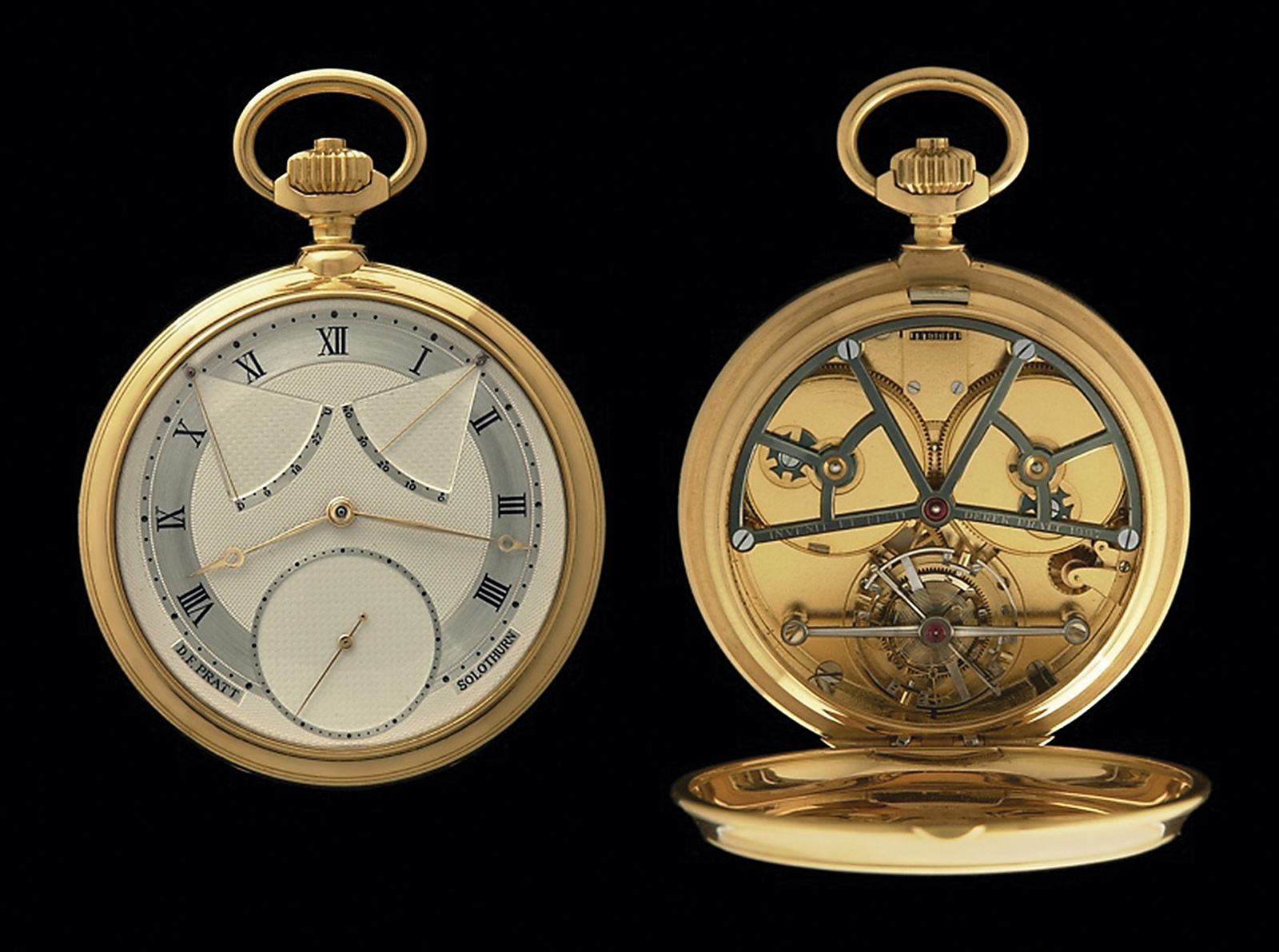
The Double-Wheel Remontoir Tourbillon
The Derek Pratt Double-Wheel Remontoir Tourbillon features a hand-cut, engine-turned dial divided into regions with different patterns, with two-fan shaped displays on the top half of the dial. The sector on the left shows the power reserve and that on the right, the temperature in Breguet style.
The twin-barrelled tourbillon movement shows Maltese cross stop-work and, below the right-hand barrel, the cone for the power reserve. As the watch runs, this conical nut moves along a thread and a lever interacting with its surface gives the indication. The cone repositions on rewinding.
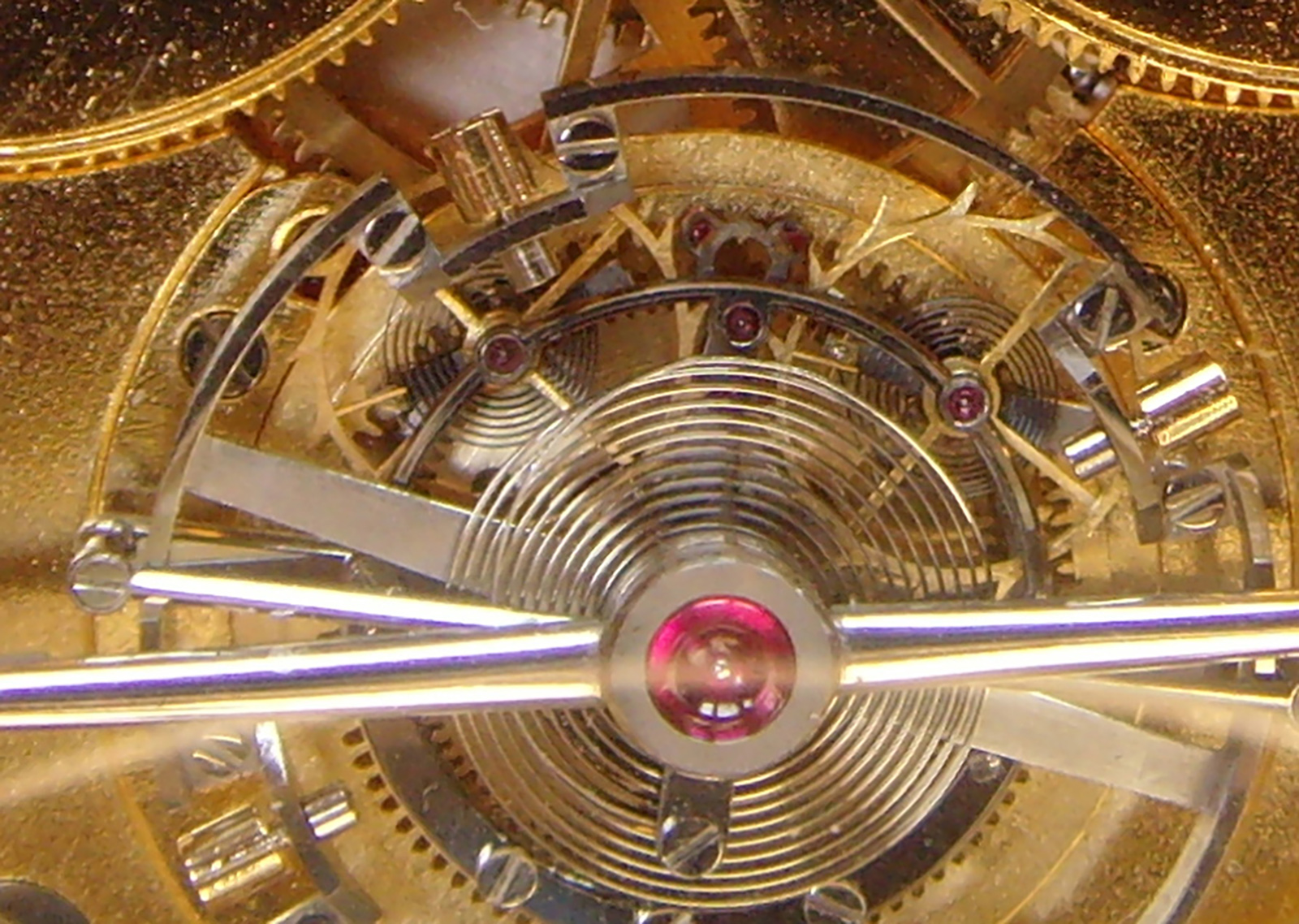
Detail of the movement showing the double-wheel remontoir
A closer look at the tourbillon carriage, taken through the glass protecting the movement, shows the double wheel remontoir. In a conventional tourbillon the third wheel of the train rotates the tourbillon carriage, which is centred on a fixed fourth wheel whose teeth engage the escape wheel pinon causing it to rotate as the carriage turns.
In the double wheel escapement the twin escape wheels must turn opposite directions. They take it in turns to drive the balance back and forth. Daniels achieved this with separate trains, making his solar-sidereal Space Traveller a logical derivative of the construction.
Derek’s breakthrough was to realise that, whilst the usual outward facing teeth of a fixed fourth wheel would turn the escape wheel one way, additional inward facing teeth would turn it the other. The escape wheel on the right turns clockwise whilst that on the left turns anticlockwise.
Note that each escape wheel carries a small, coiled spring, similar to a balance spring. As one delivers impulse the other is rewound. This is the part of the remontoir mechanism, which provides a constant force to the escapement.
The UJS years
Derek’s most widely available work bears the name Urban Jürgensen & Sønner (UJS). UJS was an 18th century Danish-Swiss company that slowly faded in the early 20th century and was acquired by his friend, watchmaker and entrepeneur Peter Baumberger, who first bought the name in 1979 and then the whole company in 1985.
Such faded brands were often referred to as “shoebox companies” in industry parlance, nothing more than a name and a box of bits. In this case the “box” included some 90 historic UJS pocket watch movements. Peter’s plan was, with most of the work being done by Derek, to add complications and produce high-end pocket watches for wealthy collectors.
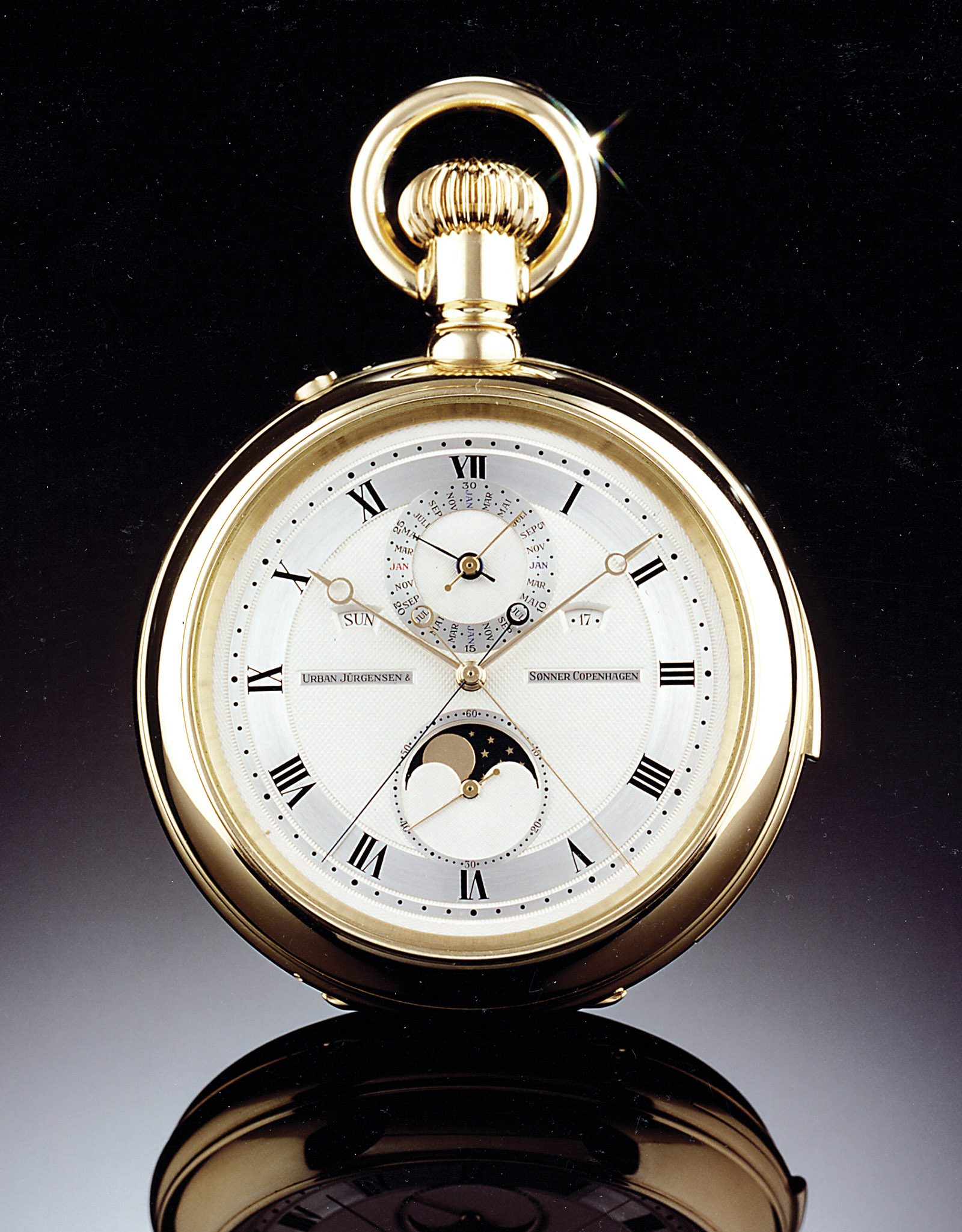
Based on an early UJS movement, the pocket watch above features a perpetual calendar, minute repeater, moon phase, and split second chronograph. Only the minute repeater was part of the original movement, the other complications were added by Derek.
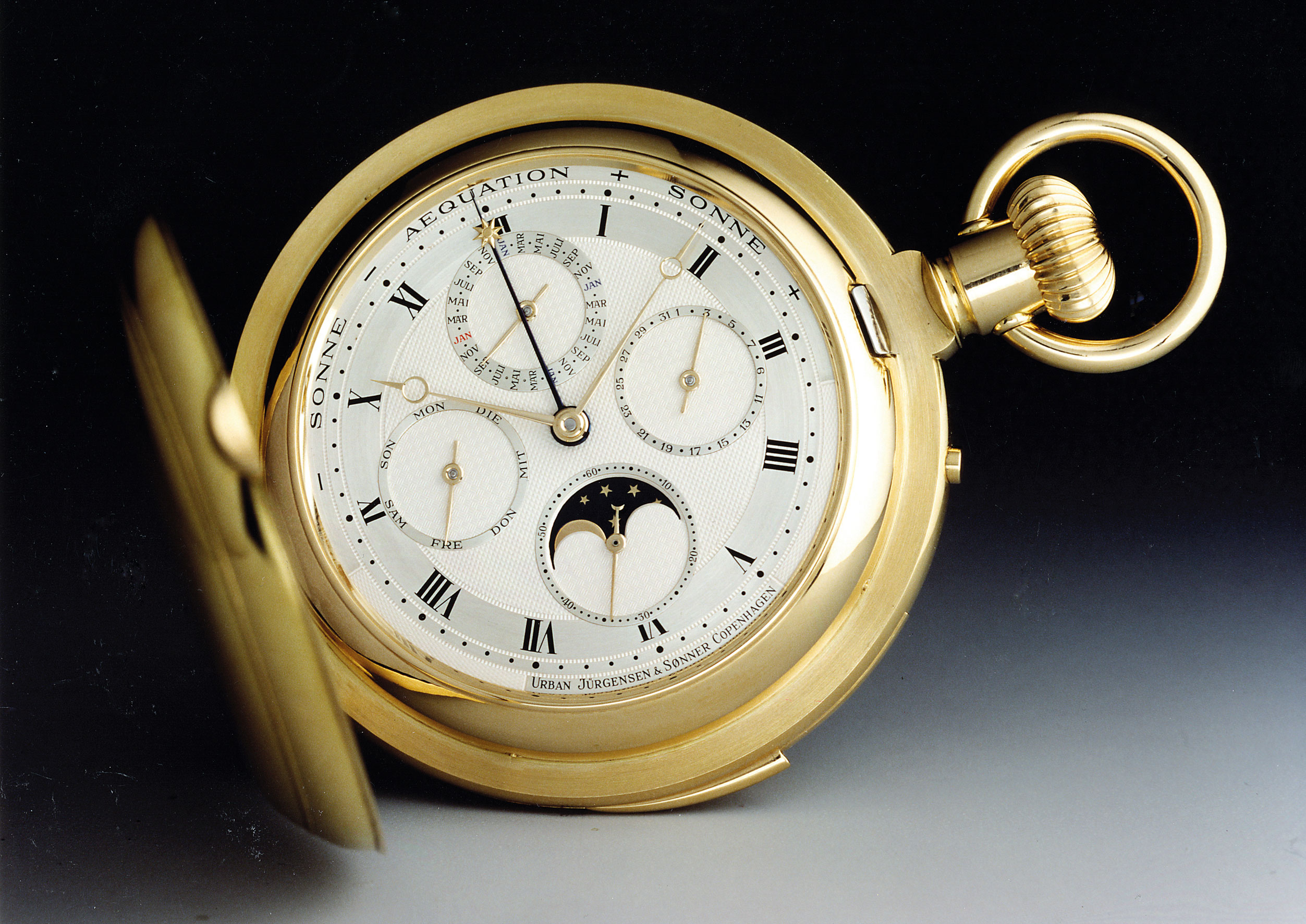
Above, another 19th century minute repeating UJS ébauche was provided with a perpetual calendar, moon phase and equation of time; the latter shows the difference between solar time and mean time as it varies through the year.
Note that this watch is in a hunter case with a hinged lid and the crown at three o’clock. The case was designed to be held in the left hand with the crown towards the fingers, making it easy to open the case to see the time when riding a horse while chasing foxes with dogs, an activity now illegal in the United Kingdom.
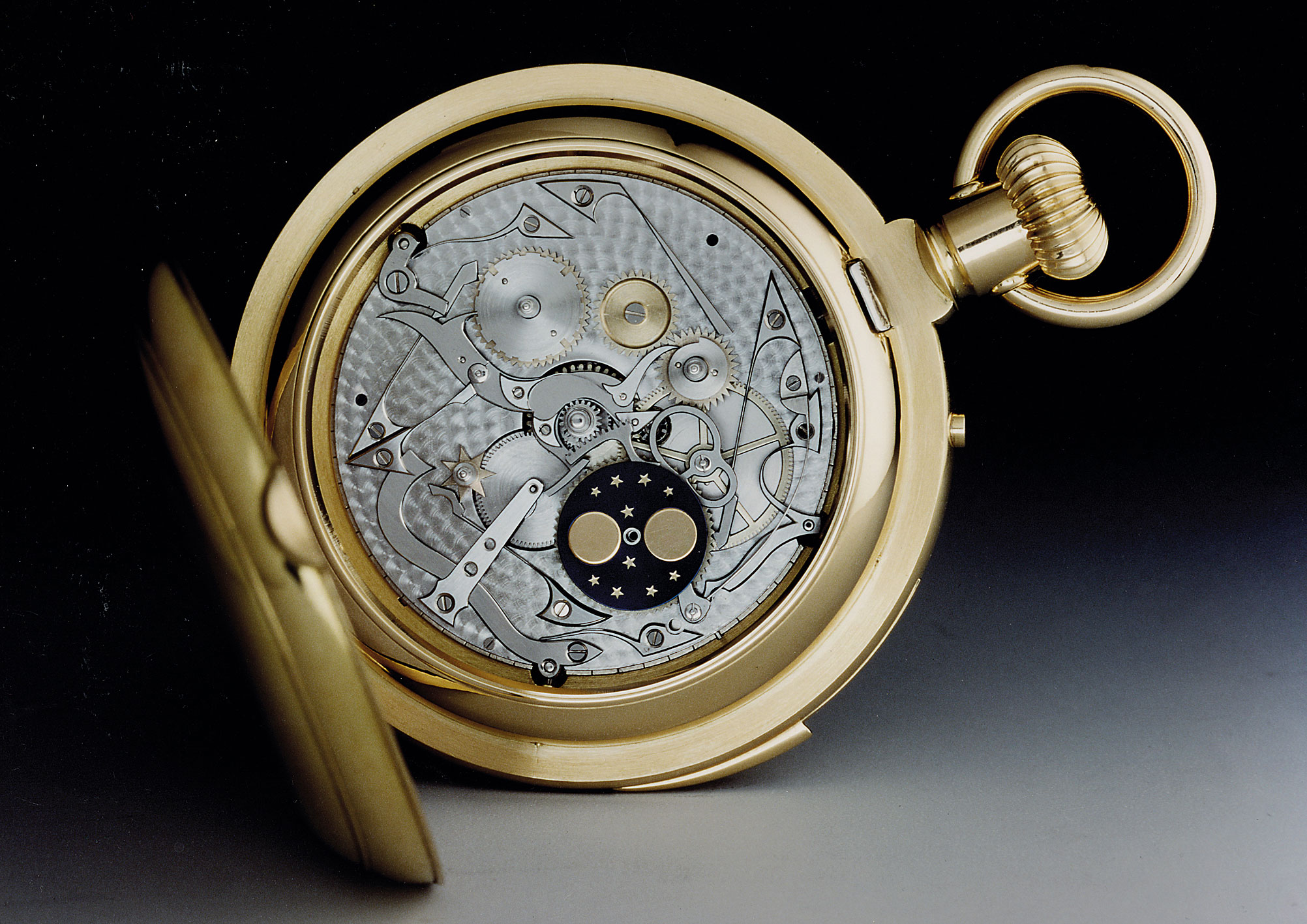
The under-dial view of the same watch, above, shows the high level of finish, in a view the owner never sees, illustrating the devotion to craftsmanship. The moons are gold, as are the stars. The kidney-shaped cam above the moon display is for the equation of time. The notched wheel opposite the moon disc programs the 48 months in the leap year cycle.
Derek showed a remarkable range of skills with series of oval, flying tourbillon watches. He made the entire watch, including the cases, dials and convex oval glass; the latter requiring the purchase of a small furnace and lots of practice.
The work was done to the highest standard and, like George Daniels, Derek again made a feature of the individually crafted, engine turned, solid silver dials.
In the movement view of the oval watch, below, the cone-based mechanism of the power reserve indication can be seen to the lower right of the mainspring barrel, opposite the winding arbor.
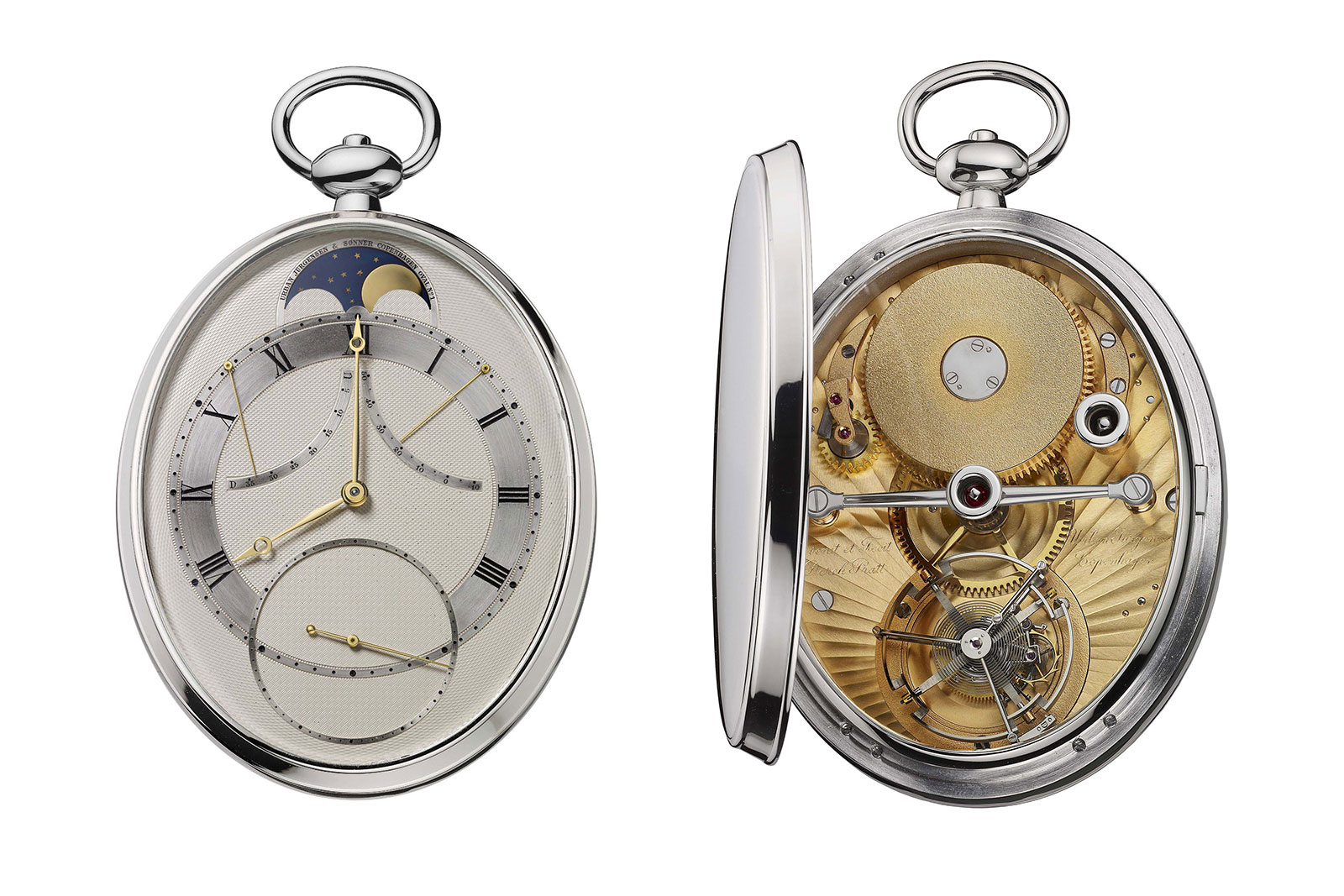
The oval pocket watch with tourbillon and detent escapement made in 1991 for Urban Jurgensen
Engine turning is an extraordinarily demanding skill. Each line on the dial is cut with a single stroke on a manually operated machine that has to be readjusted after each stroke. Any lapse in concentration, at any of the hundreds of steps need to make a dial, means scrapping the work and starting again.
For volume production, similar work is done on a steel blank to produce a stamp that is then used to produce dials en masse, but stamped dials can never match individually cut dials. It’s rather like comparing a print with an original painting.
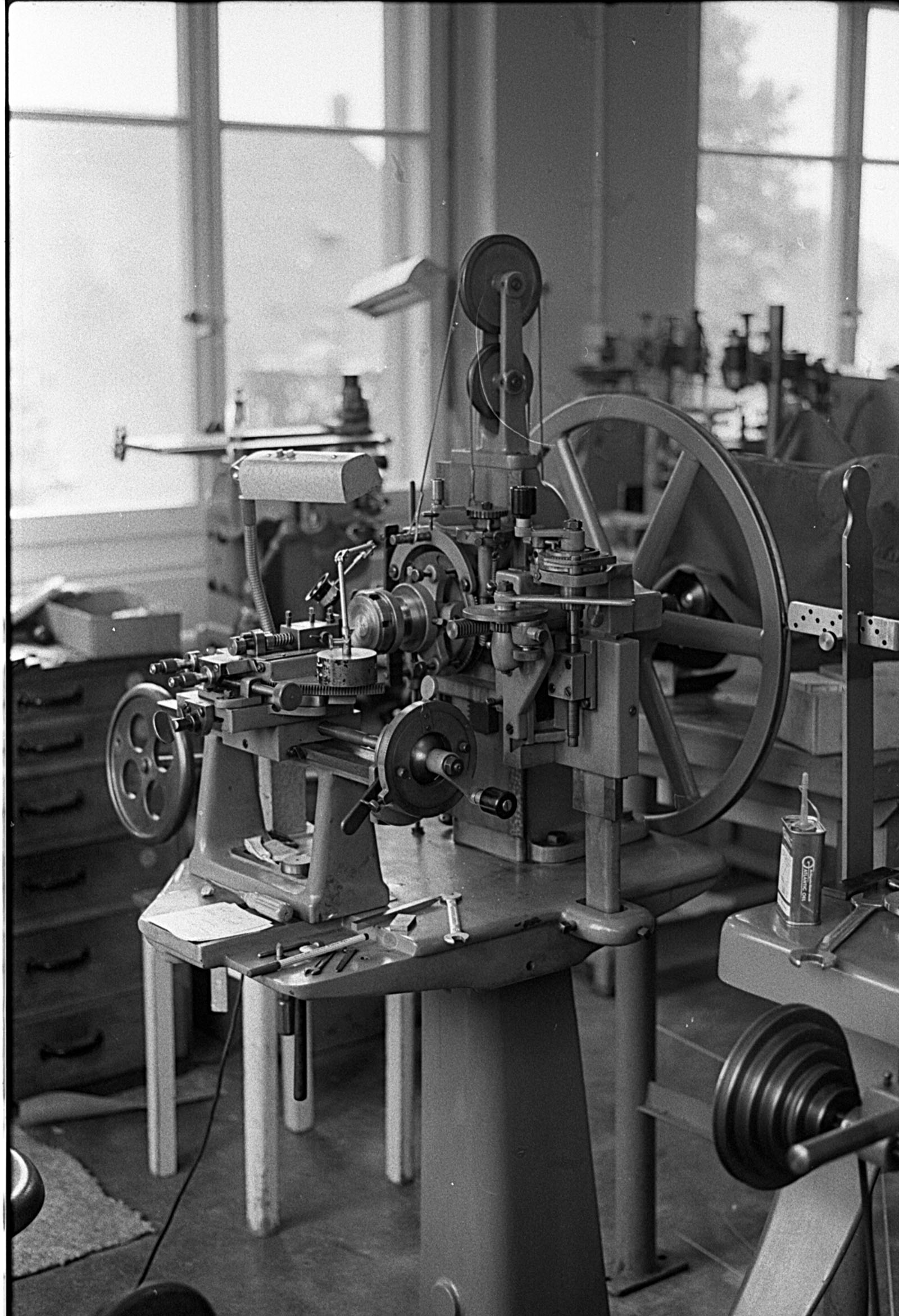
One of the entirely mechanical, hand operated, engine turning machines used by Derek
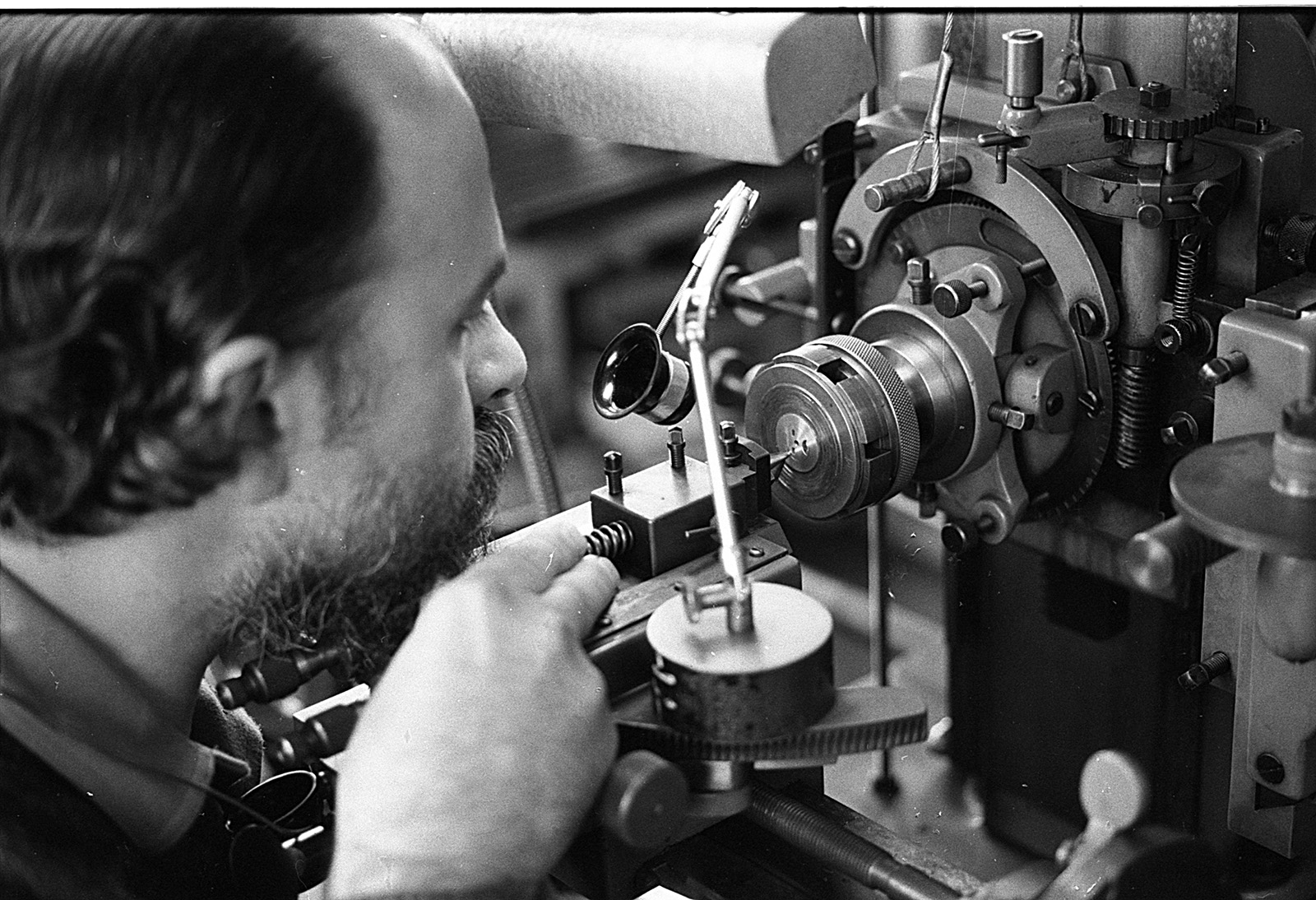
Derek using the engine-turning machine to decorate a wristwatch dial. The cutting tool is pressed against the dial, which is moved up and down by turning a wheel.
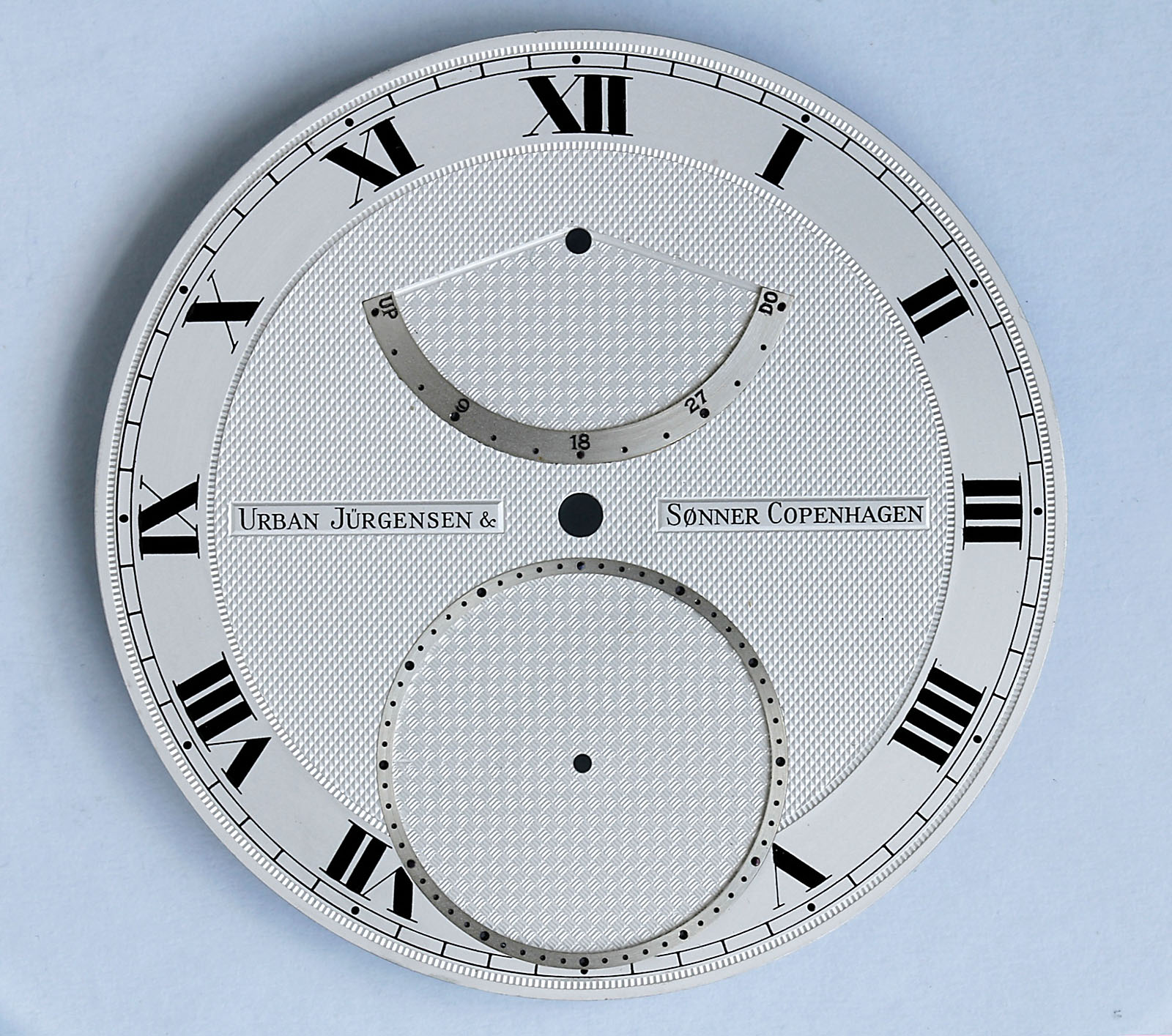
The wristwatch dial above looks perfect but was never used. Detailed examination shows minor flaws, circled below.
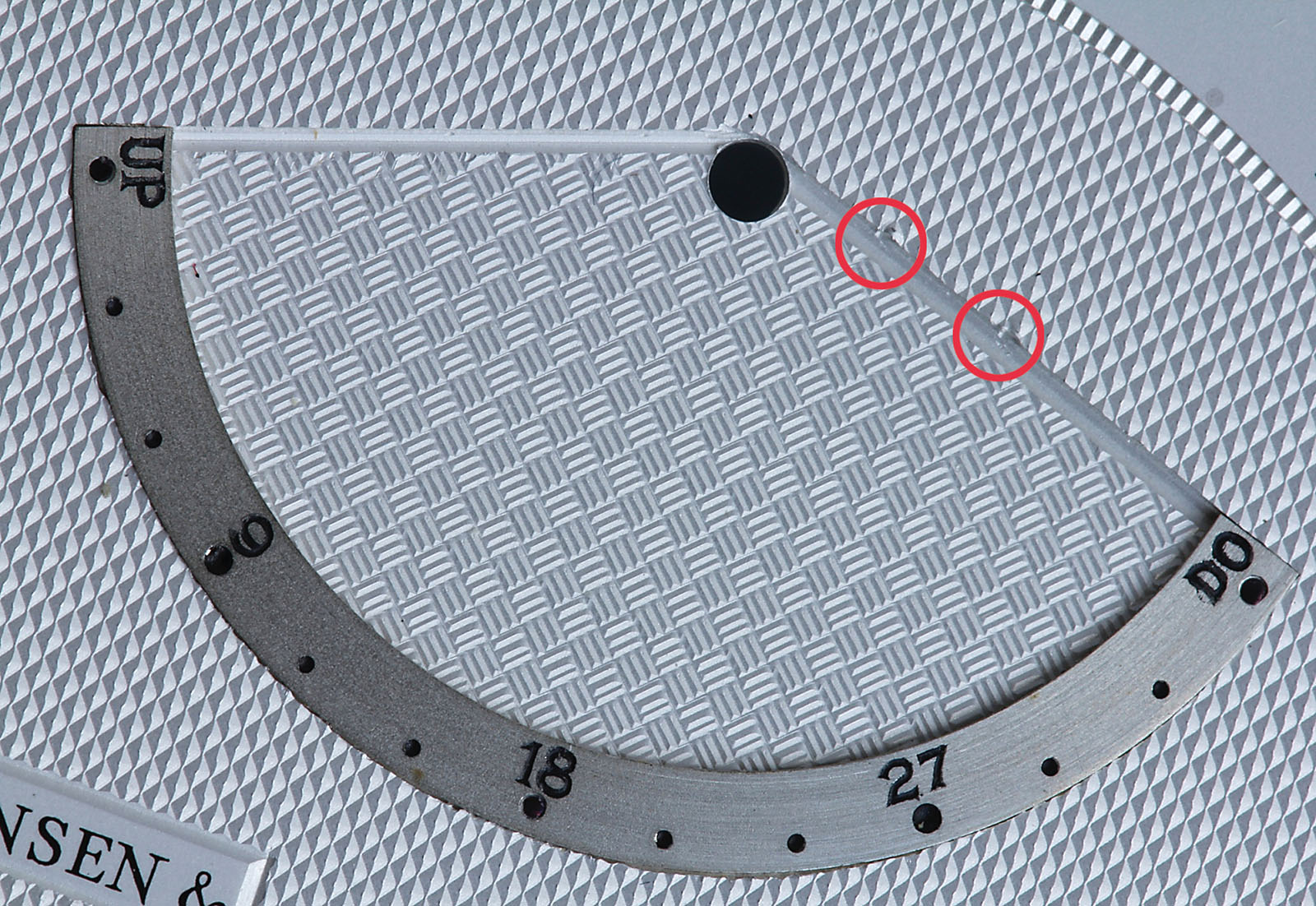
Each pattern is completed separately. Areas can be delineated by a groove (along the top edges of the power reserve display), knurling (top right corner), or inserting a separate piece, as with the crosshatched power reserve scale. Some makers assemble dials using separate pieces for each pattern, with the pieces joined on the rear.
From 1990 the newly rejuvenated UJS produced some limited edition wristwatches based on modern Frederic Piguet movements with added complications, namely a perpetual calendar with moon phase (the Ref. 2) – 122 were cased in gold and 53 in platinum – as well as a model with an additional power reserve (the Ref. 3). At this stage Derek decided to teach Peter how to do the engine turning.
Peter was also keen to produce a unique wristwatch with a detent escapement similar to those found in marine chronometers. This posed an enormous technical challenge. The detent only impulses the balance in one direction and the return swing is driven by the balance spring. This operates fine with a heavy balance in a relatively stable environment, but with a lightweight balance swinging about on someone’s wrist, it was an enormous technical challenge.
Derek was able to produce a successful prototype but by 2008 he was very ill with a recurrence of prostate cancer and he died the following year. Peter then sold UJS to Dr Helmut Crott, founder of the eponymous German auction house, but was himself to die in 2010.
After perfecting the detent escapement with the help of Kari Voutilainen, Dr Crott sold UJS to former Nokia executive Søren Petersen in 2014, returning the company to Danish hands, though it is still based on Switzerland.
Independent Watchmaking
But there is much more to say about Derek Pratt. His commercial work, described above, only served to put food on the table while he indulged his hobby: designing and making unique watches and clocks from the ground-up; starting, like a chef, with the raw ingredients. He did that at his workshop, which occupied two floors of his spacious home on a hillside in Balm bei Günsberg, about an hour’s west of Zurich.
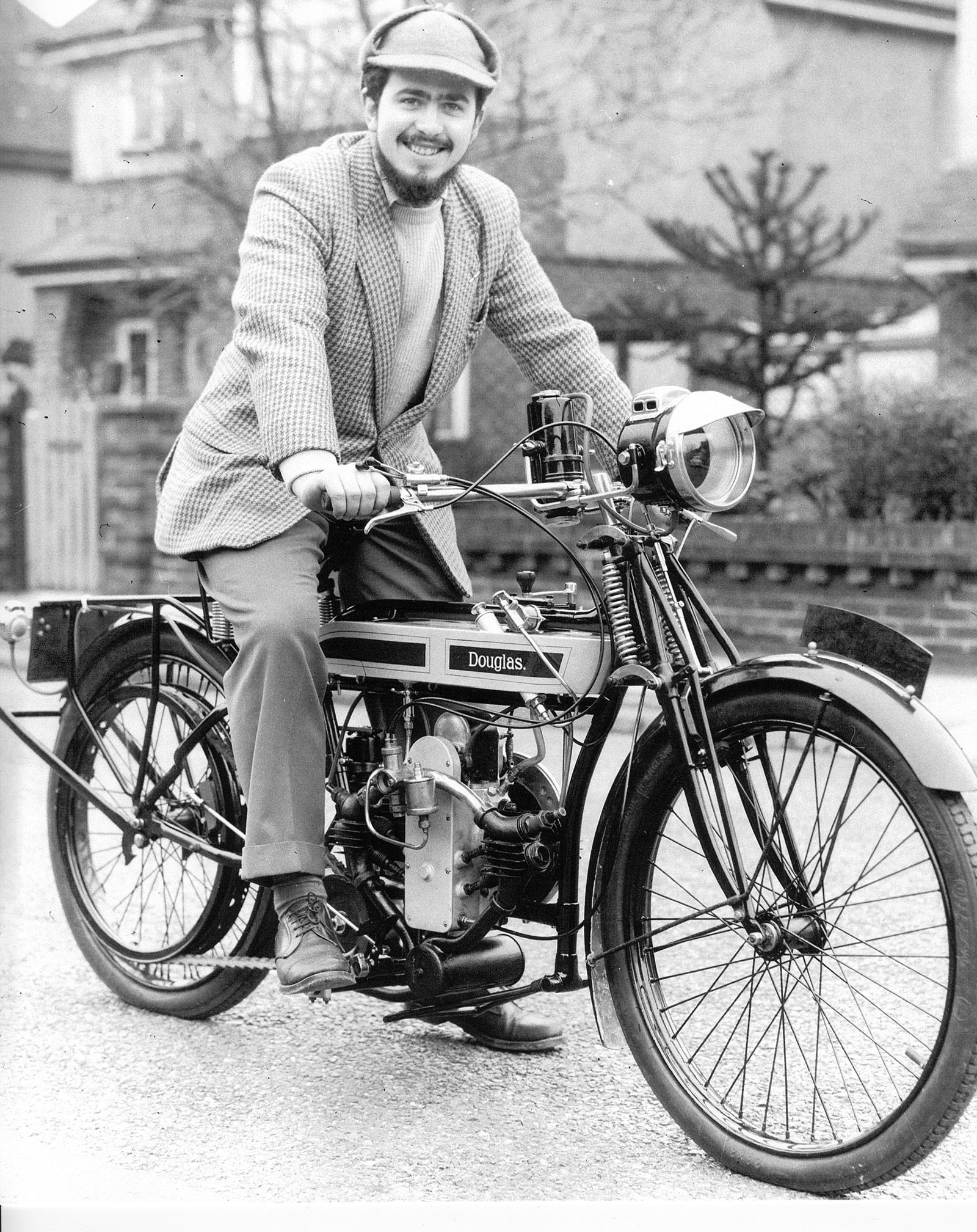
A young Derek Pratt is shown above on the 1914 motorcycle he used to travel to work in London in the 1960s. Old things were cheap then; collectors had yet to appreciate them.
Although warm and friendly and very ready to give help and advice, especially to students, Derek could be very bloody-minded.
Born in England in 1938, after a childhood making model aircraft and learning to use a lathe, which he financed by delivering newspapers, he was one of the most promising students on the course he started at the National College of Horology in 1956, but he never graduated.
The original prospectus said that students would finish and assemble a pocket watch in their final year, but, as the British watch industry was waning, the project was suddenly changed. Derek left immediately. He felt betrayed.
Soon after, when the course collapsed, the tutor, Andrew Fell, took Derek on in his micro-engineering firm and sent him to Switzerland to make the tiny, 25-micron soldering nozzles then needed in the fast developing field of micro-electronics. Derek also helped to develop the mechanics for a black box flight recorder.
It was in Switzerland in 1972 that he decided to go it alone as a watchmaker, and soon earned a reputation for being able to handle difficult watch and clock restoration projects – this was how he met Peter Baumberger, who was then an enthusiastic collector.
With the mechanical watch industry in decline due to the advent of quartz, Derek was able to obtain an extraordinary array of classic, high precision, mechanical watchmaking machines for next to nothing, many at their scrap value. There seemed to be unnecessary duplication of machines in his workshop, but it was actually very efficient, as each machine could be optimised for a particular type of job.
He could then start making watches. Notwithstanding all his equipment, much of the work was done by hand with a piercing saw (essentially a miniature hacksaw) and a small hand-operated lathe.
Derek worked from rough sketches, almost back-of-an-envelope stuff. Engineering drawings, he believed, are to show other people what to do. They aren’t needed when making unique pieces to a design, which is largely in your head.
Derek did have one special piece of luck. Soon after leaving the college, he had formed an engineering company with a like-minded childhood friend, Derek Goldsmith. Back then, the English were just being introduced to the concept of taking frequent showers rather than a weekly bath, but they were nervous about correctly adjusting the flow of hot and cold water.
The two friends had started working on a thermostatic mixer valve when Derek left for Switzerland. The valve, later developed and sold as the Aqualisa, was to make the friend a millionaire who, to his credit, became a financial supporter of Derek’s projects and a buyer of his most important watches, most notably the Double-wheel Remontoir Tourbillon described at the beginning of this article. That was followed by the single-wheel remontoir, later to be used in a wristwatch.
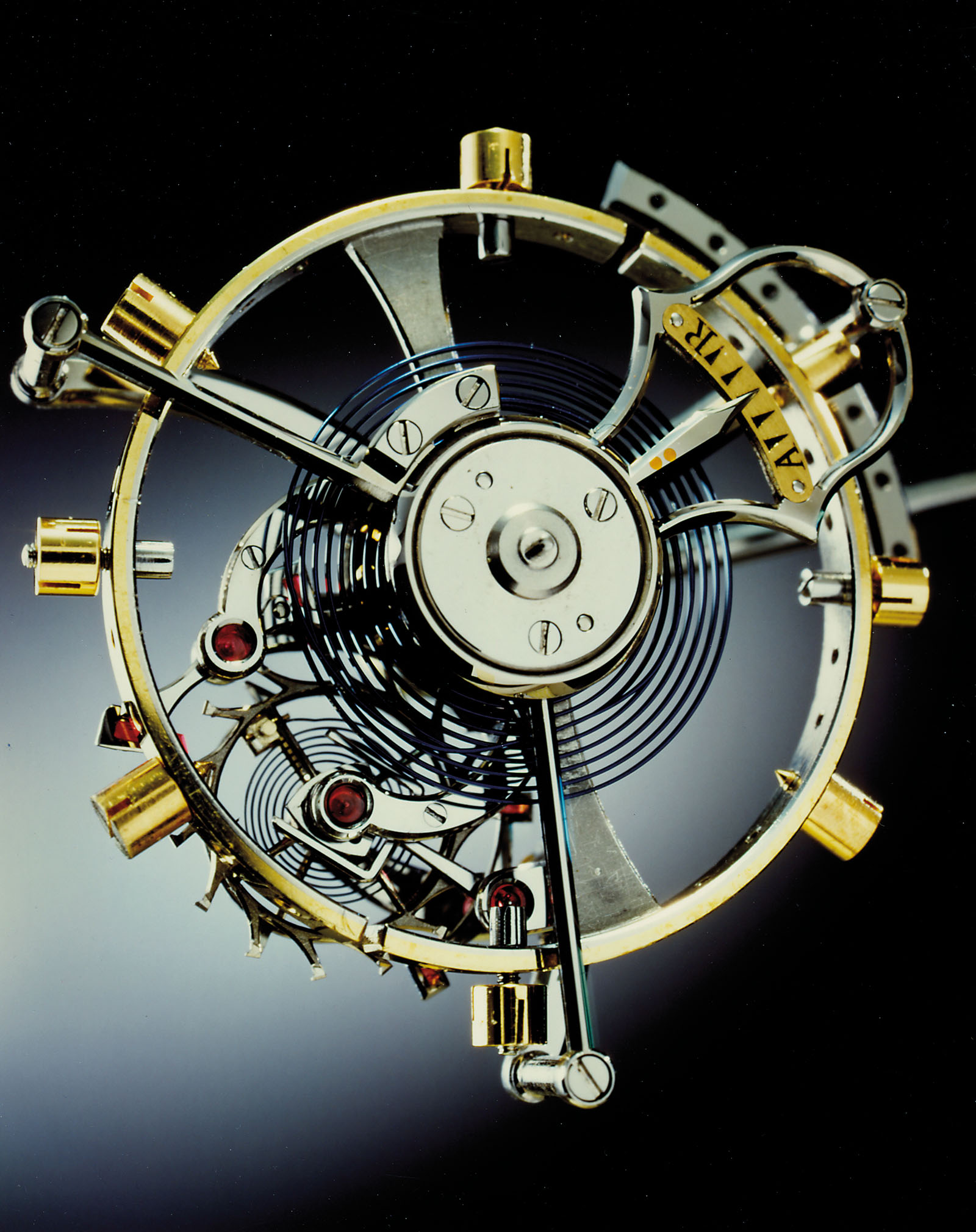
The remontoir carriage of a Pratt single-wheel tourbillon pocket watch.
In a conventional tourbillon, the escape wheel is driven by the rotation of the tourbillon carriage. In the Pratt remontoir tourbillons there is a discontinuity between the escape wheel and its pinion.
The escape wheel is not fixed to its arbor (or shaft) but rotates freely on it. Below it, fixed to the arbor, is a remontoir wheel. It resembles an escape wheel but has fewer teeth. The remontoir wheel is connected to escape wheel by a spiral spring. This is wound and released every second producing a constant force.
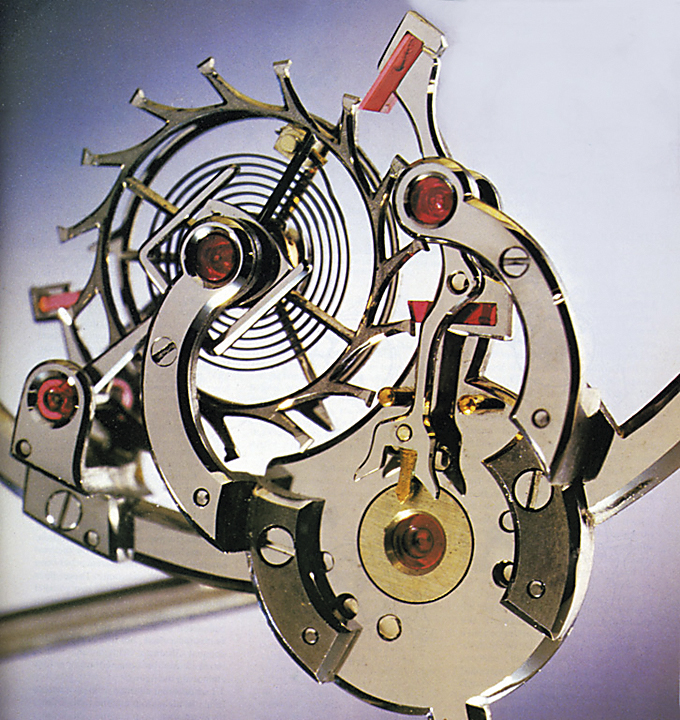
The remontoir with the balance removed.
Looking more closely, with the balance removed, it is easier to see how it operates. It is a “side-lever” escapement with the lever on the right. We can see its pallets engaging the teeth of the escape wheel. Below the escape wheel is the tri-toothed remontoir wheel.
Slightly out of focus on the left we see one of the pair of pallets, which lock and release the constant force mechanism. The arm holding these pallets is linked to the two-pronged fork, which embraces a triangle with curved faces. This is a special shape, a Reuleaux triangle, which has a constant diameter. It rotates with the escape wheel when locking and releasing the remontoir.
When the tourbillon carriage moves by its 6° step each second, the remontoir unlocks, the spring is wound, and the remontoir locks on the next tooth. The turning of the escape wheel is driven by the spring, with the same power delivered every second – a constant-force escapement.
Derek’s fascination with the Reuleaux triangle had lead him to buy two of the Wankel rotary-engined sports cars Mazda produced in the 1970s. He kept one in England and the other in Switzerland.
Derek and Daniels
George Daniels was twelve years older than Derek, and Daniels’ early work illustrated that there was a demand for unique pieces. Derek soon showed an equivalent level of skill and creativity.
For many years they had long telephone conversations each Sunday morning exchanging ideas, with George in the Isle of Man and Derek on his Swiss hillside. Sketches were exchanged by fax; neither had much truck with computers or email, even when they became available.
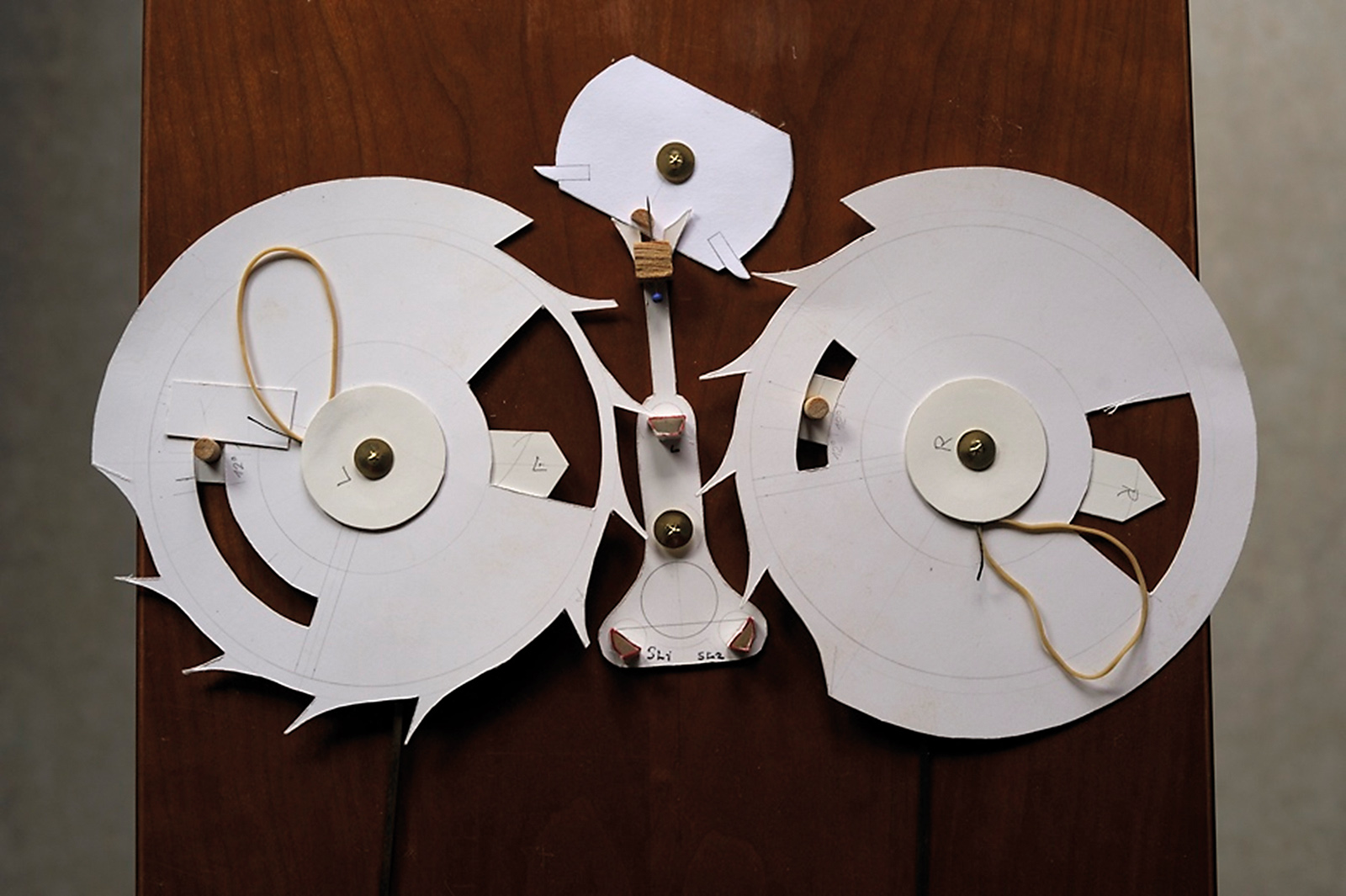
Derek’s working model of the double-wheel remontoir escapement was made of cardboard and driven by elastic bands – no computer required.
Although George could never bring himself to acknowledge his contribution, Derek made many of the components for George’s watches, especially the difficult dual escape wheel at the heart of the Co-Axial escapement.
Derek’s contacts and language skills played an important role in the eventual adoption of the escapement by Omega. Other companies had been approached but with the future of the mechanical watch in doubt, there was little enthusiasm for anything new.
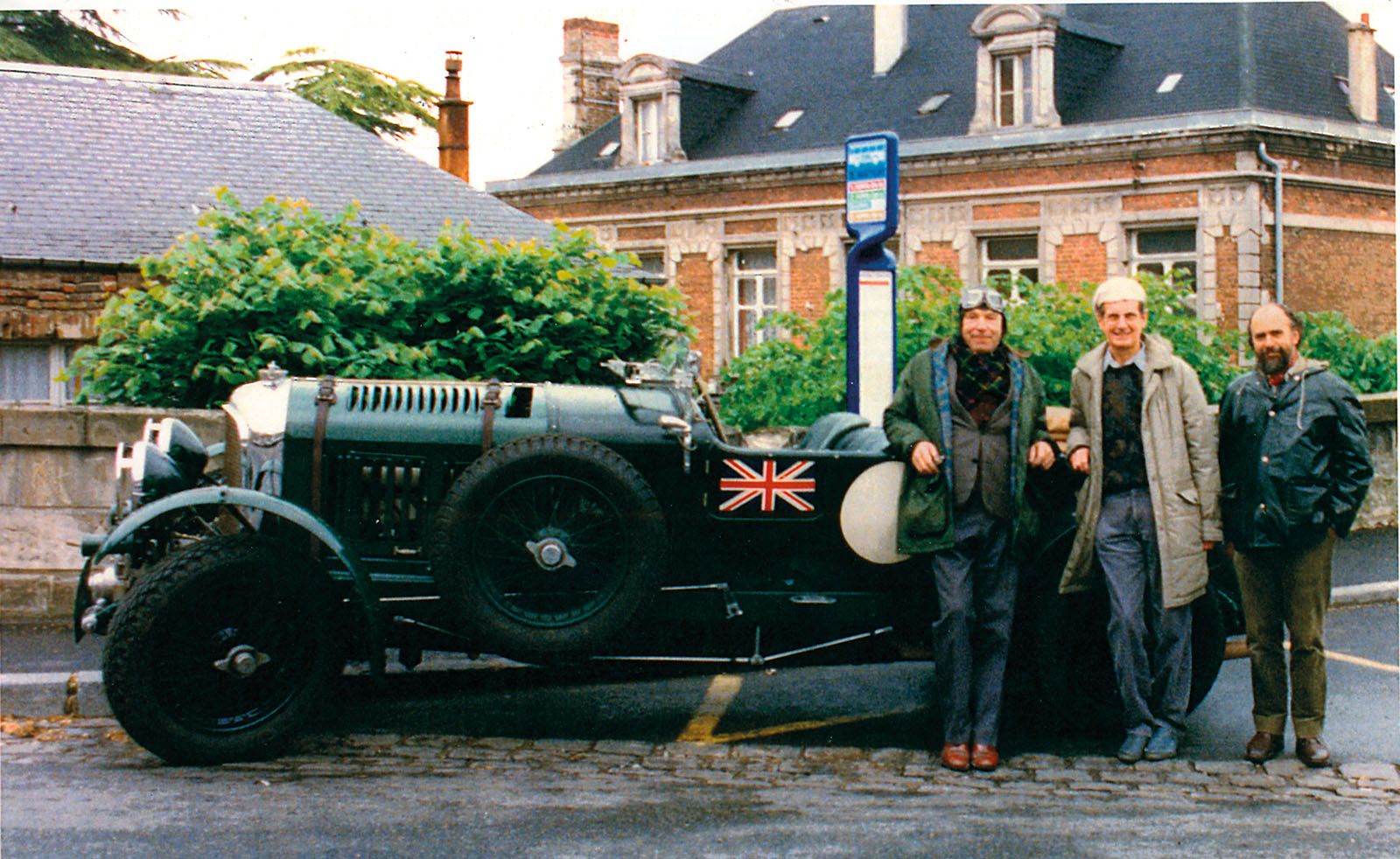
Daniels, a vintage car enthusiast (left) and Pratt (right) with Grahame Brooks, UK Sales Director of Audemars Piguet, in 1986, on the way to visit its factory in Switzerland in Daniels’s famous 1928 “Blower Bentley” No. YU3250 to try to interest AP in adopting the Co-Axial escapement.
Replicating John Harrison’s H4
From childhood, Derek loved to visit the National Maritime Museum at Greenwich. He was fascinated by John Harrison’s sea clocks, including the Longitude Prize-winning H4, which in those days was on display and running. He was determined that one day he would make a copy.
This was no easy task as information was only available from the limited published sources. The museum has always refused to cooperate with replica makers and will not allow close examination of the H4. For many years it was claimed that this was on security grounds as the H4 belonged to the Admiralty.
Harrison had been careful, in the design of H4, to hide much of the detail of the mechanism. In attempting a reproduction a great deal of patient research and trial an error was required. Eventually considerable progress was made on the movement and other craftsmen were recruited to make the extraordinarily massive silver case, the large vitreous enamel dial, and to do the magnificent engraving.
Unfortunately, with Derek’s deteriorating health, it became obvious that he could never complete the project. In his last months he consulted very closely with staff from the London chronometer maker Charles Frodsham and it was they who finished the project in 2014, in time for the Pratt-Frodsham H4 to join a world tour of museums for the 300th anniversary of the Longitude Act.
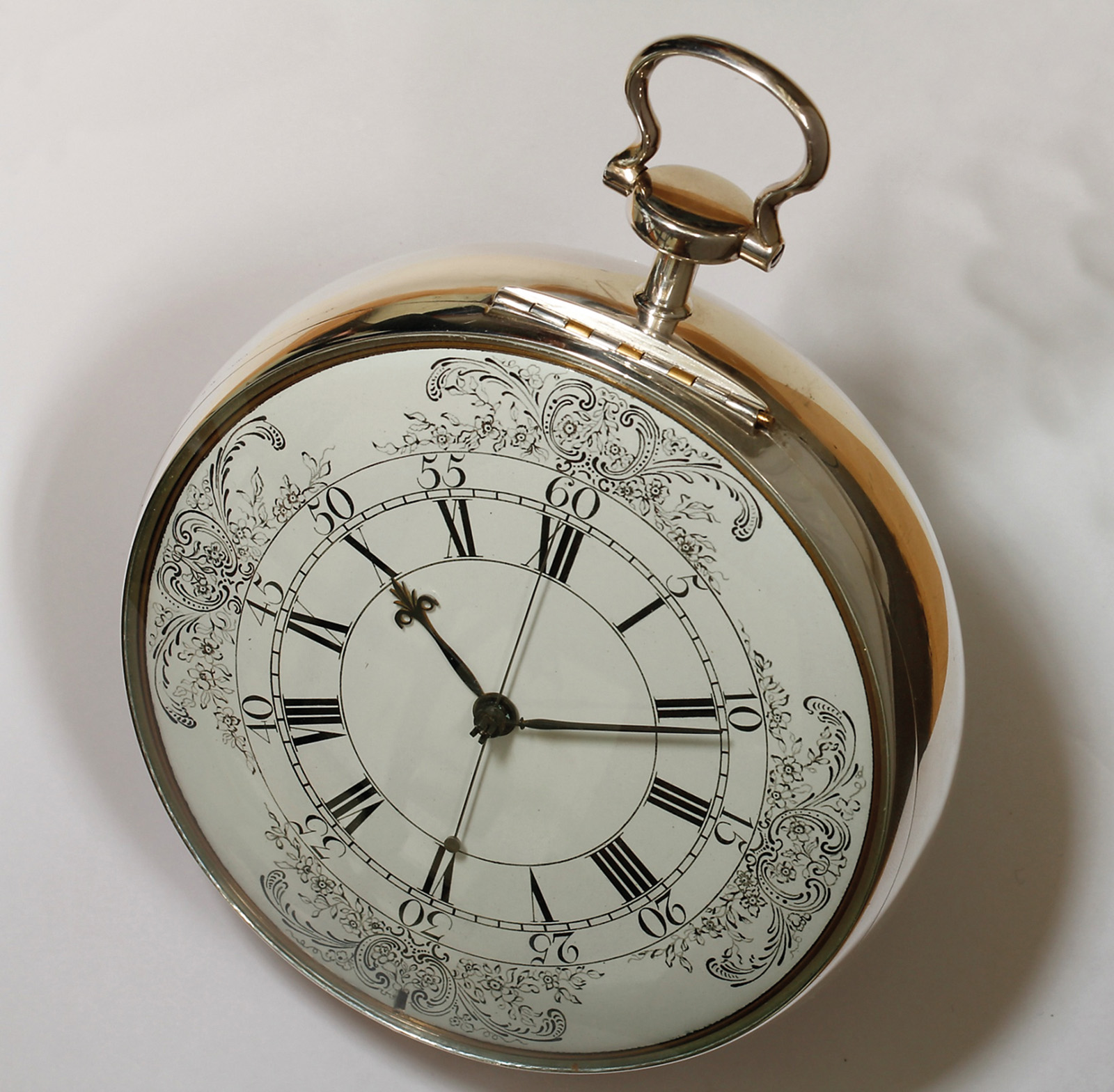
The H4 is a very large watch.
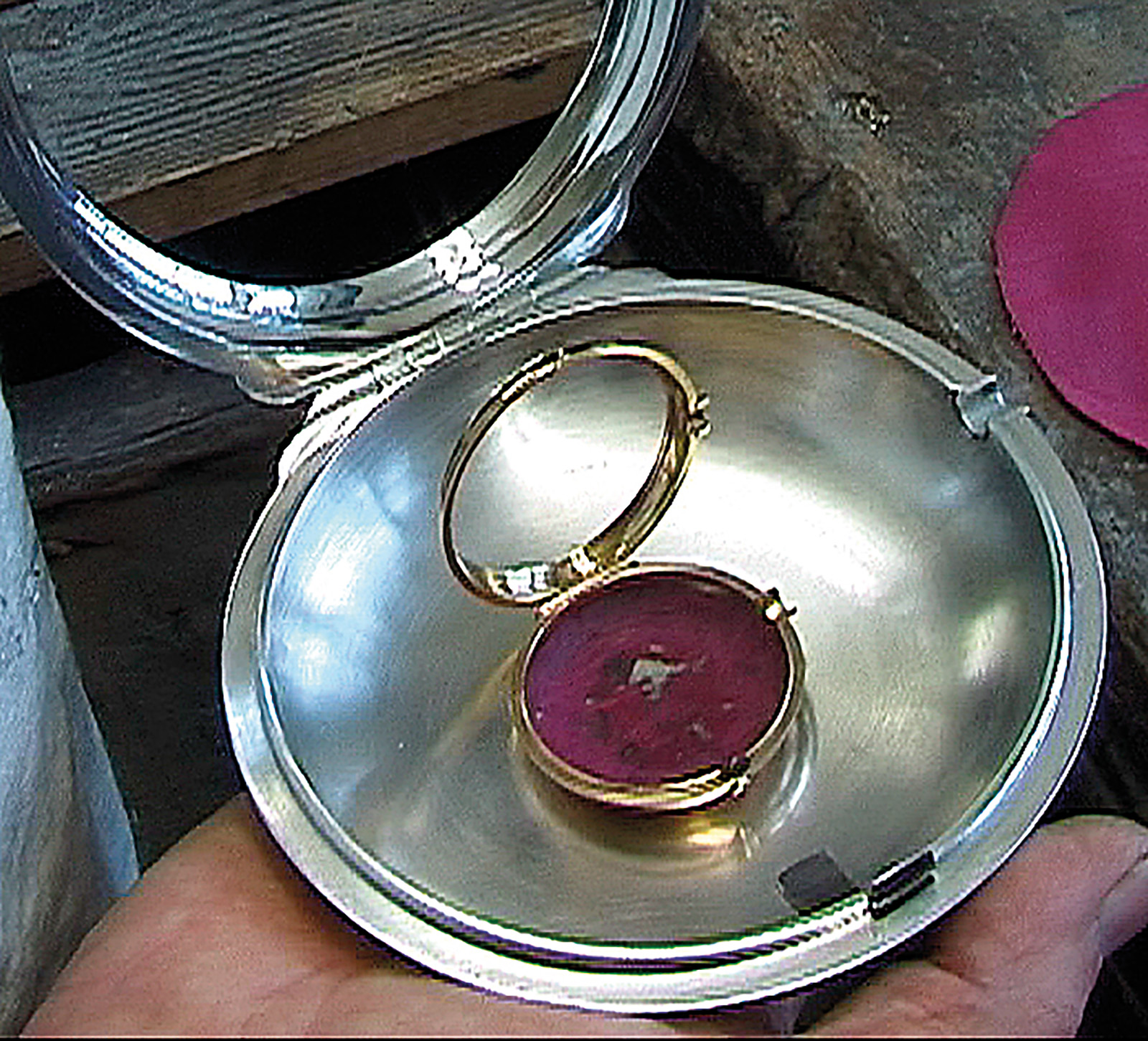
The case of an ordinary pocket watch is shown sitting in the outer case of the Pratt-Frodsham H4.
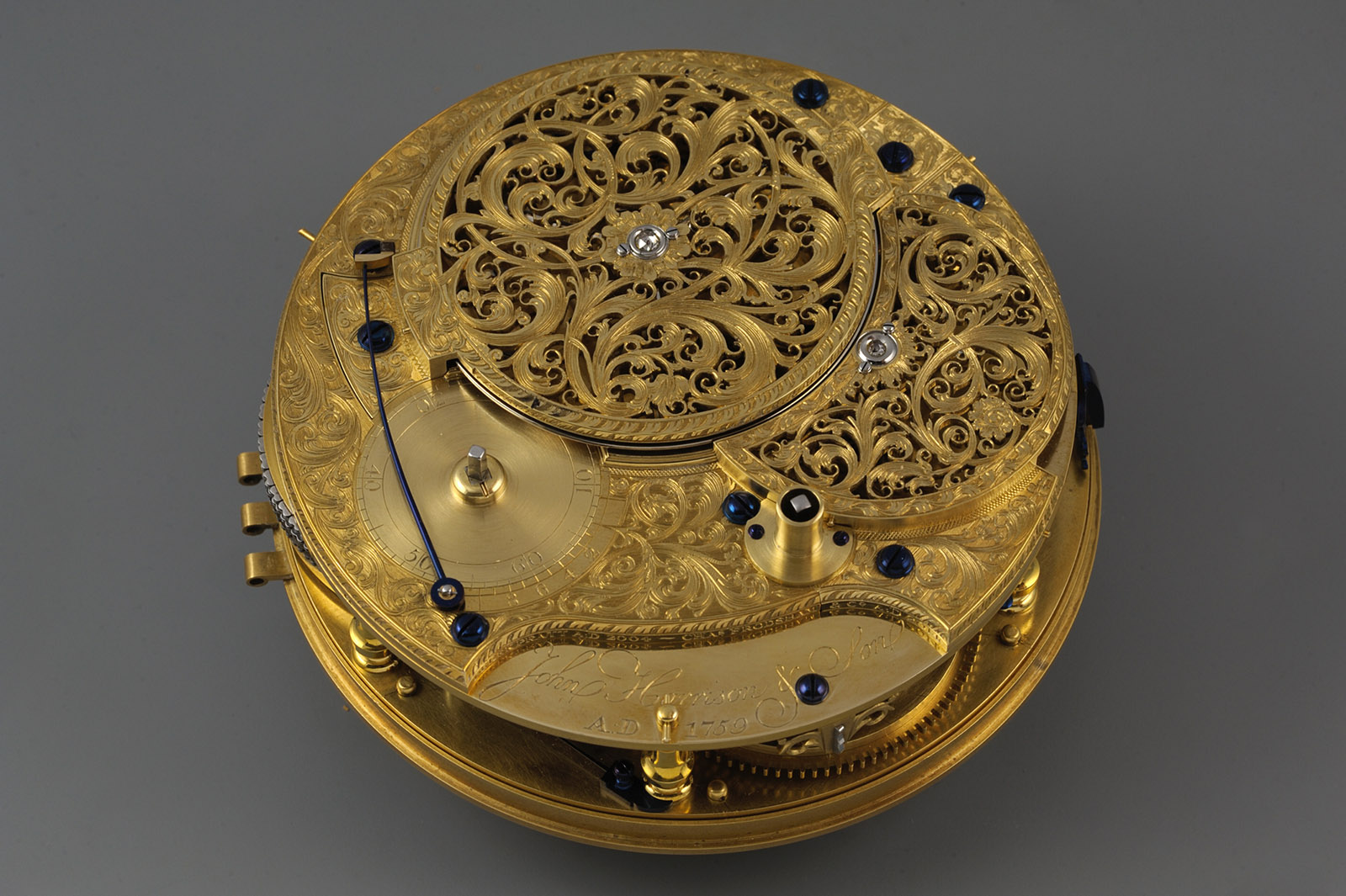
The movement of the Pratt-Frodsham H4. The edge of the watch plate is engraved “Derek Pratt A.D. 2004 ~ Chas. Frodsham & Co A.D. 2014”.
The short film, A Detailed Study of H4, tells the story with fascinating technical details of the special skills and processes involved in making the replica. (It’s available from BD Videos and producer Barbara Darby donates video proceeds to prostate cancer research.)
Following Derek Pratt’s death, a memorial seminar and exhibition was held at the headquarters of the British Horological Institute (BHI) in 2009. The proceedings, along with copies of the many articles written by Derek, workshop notes and other material, were published by the BHI as a book Derek Pratt, Watchmaker, which I put together and is available from the BHI.
The Legacy
It was at Derek’s suggestion that Frodsham decided to incorporate the Daniels double impulse chronometer escapement in its new wristwatch, built entirely in-house.
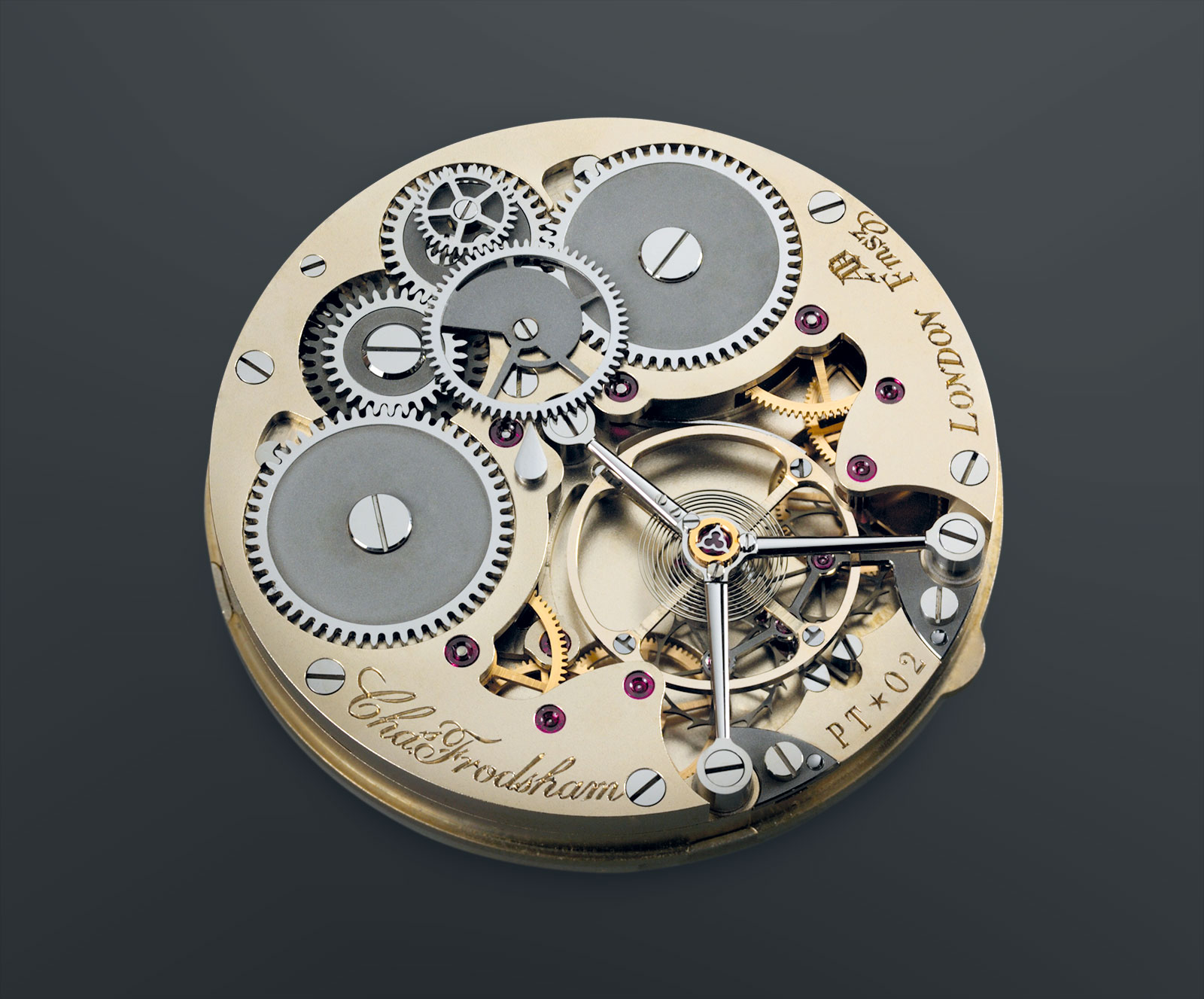
The movement of the recently revealed Frodsham Double Impulse Chronometer Wristwatch with the Daniels chronometer escapement.
The Frodsham watch has twin barrels driving separate trains, with hardened gold wheels, curving around each half of the movement to allow for a large balance beating at 3Hz or 21,600bph.
Note that the barrels are wound in opposite directions so that the twin escape wheels, partly hidden under the balance, also turn in opposite directions and can take it in turns to impulse the balance, first in one direction and then in the other. They interact directly with the balance as in a marine chronometer. This is almost frictionless and requires no lubrication.
A wristwatch featuring Derek’s constant force escapement has been developed by a pair of American watchmakers, Stewart Lesemann and Ron DeCorte, under the Derek Pratt trademark.
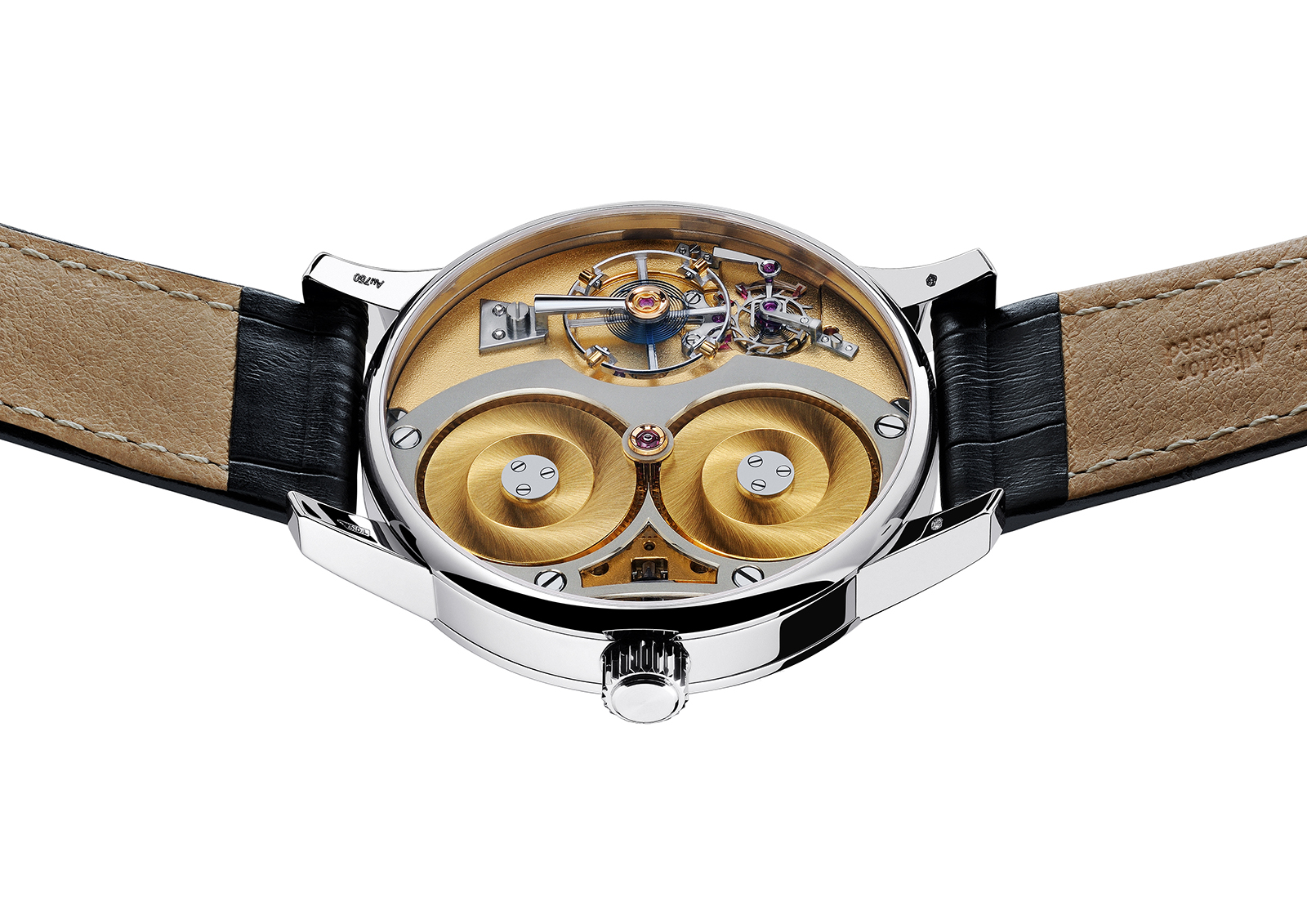
The movement of the Derek Pratt watch developed by Ron DeCorte from a prototype planned by Derek. The twin motor barrels provide power to the constant-force escapement remontoir. They could be called flying or floating barrels as they lack bridges. Credit Guy Lucas de Peslouan
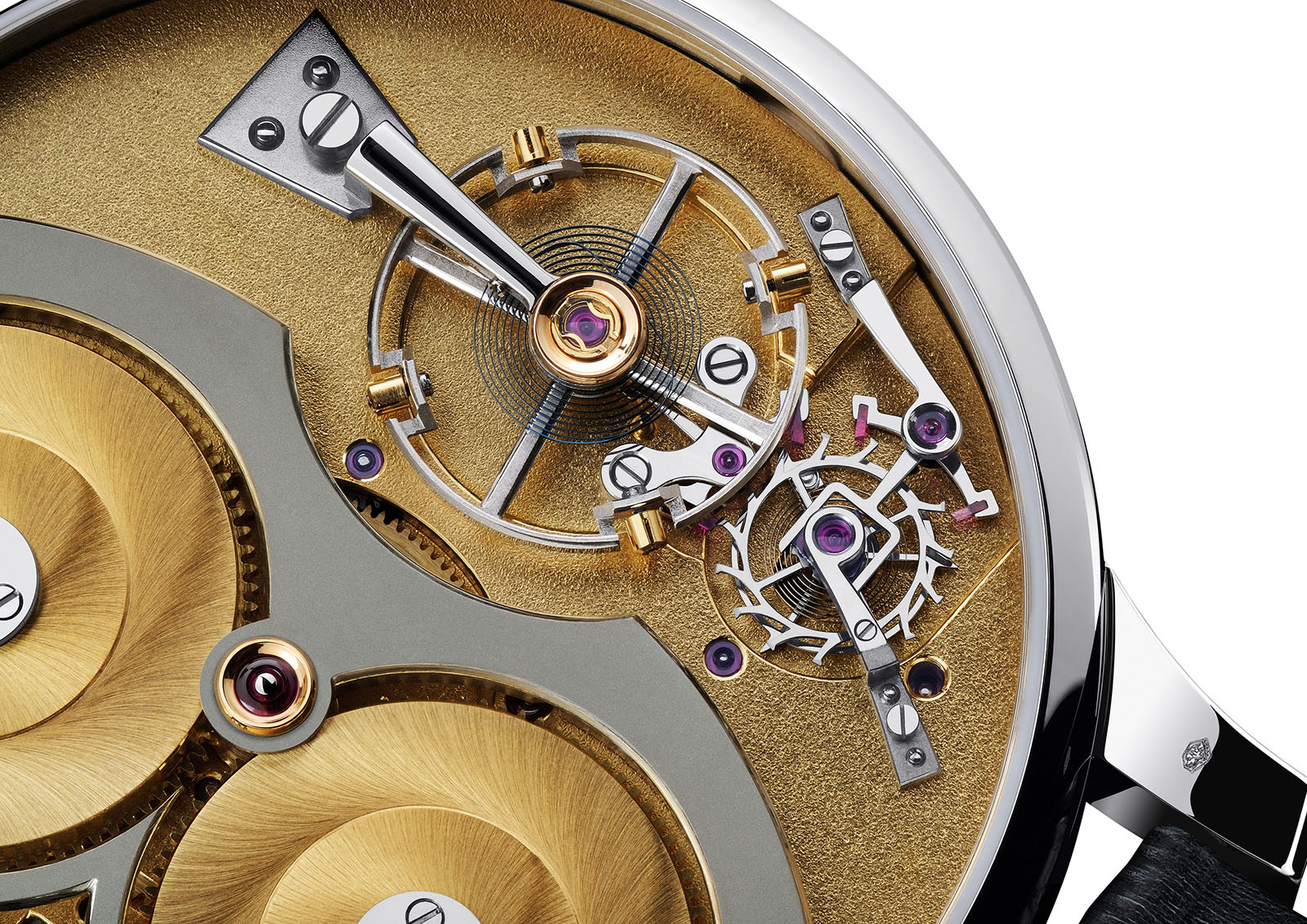
Credit Guy Lucas de Peslouan
Above, a closer look at the escapement shows the 15-tooth escape wheel co-axial with a three-tooth remontoir wheel below it. The gear train drives the remontoir wheel whilst the escape wheel is fixed to a collar, which rotates freely on the remontoir arbor. A spiral spring connects the two wheels.
When the remontoir wheel turns, it tensions the spring and the resulting torque drives the escape wheel. To the right of these wheels we can see a pair of pallets fitted to a T-shaped lever. The base of the “T” forms a two-pronged fork. This embraces a triangular jewel (as in the first Derek Pratt remontoir tourbillon it’s a Reuleaux triangle), which is fitted to the collar on which the escape wheel is mounted.
As the escape wheel turns, this triangular jewel alternatively locks and releases the remontoir. When it locks the spiral spring drives the escape wheel. Every second, after five beats of the 2.5Hz balance, the remontoir unlocks, the spring winds, the remontoir is locked and the cycle continues, with an equal amount of energy delivered to the escape wheel every second.
The memory of Derek Pratt the man will die with those fortunate enough to have known him, but as with all creatives, his legacy is the work he left behind. In addition to his watches, Derek made a handful of rather special clocks with highly imaginative mechanisms, but as a watchmaker, he was among the finest of his generation.
The help of Richard Stenning at Charles Frodsham & Co, Grahame Brooks, and Ron DeCorte in preparing this article is gratefully acknowledged.
Tim Treffry is of a generation that was given a Timex at 14, and a better watch at 21, which was supposed to last for life. Tim first became aware of the watch industry in 1989 when, well into middle age, he became editor of The Horological Journal, the periodical published by the British Horological Institute. At that time the Swiss industry was still suffering the Quartz Crisis but some were beginning to hope that perhaps the mechanical watch, an obsolete technology, had a future. It seems that it did. He became a freelance writer in 2006 and is mainly interested in technology – what makes it tick?
Back to top.
